How Much Do New Sails Cost?
Sooner or later it needs to happen: you need to replace those precious sails. Everybody knows it's expensive, but how expensive exactly? Let's look at the data.
How much do sails cost? Replacing the jib and main sail on a 24' Bermuda sloop will typically cost between $1,000-$2,500. Sails on mid-sized boats (34') will generally cost between $3,000-$5,000. Prices can greatly vary depending on boat length, sail material, quality of fabric, and so on. Cost increases relative to sail area and hull length.
Of course it's a matter of 'how long is this piece of string?' - but it's not impossible to give something of an answer. It frustrated me that nobody just stated a price. So to fix the problem, I've come up with a new formula. Also, better quality doesn't always give you the best bang for your buck. Read on to find out why.
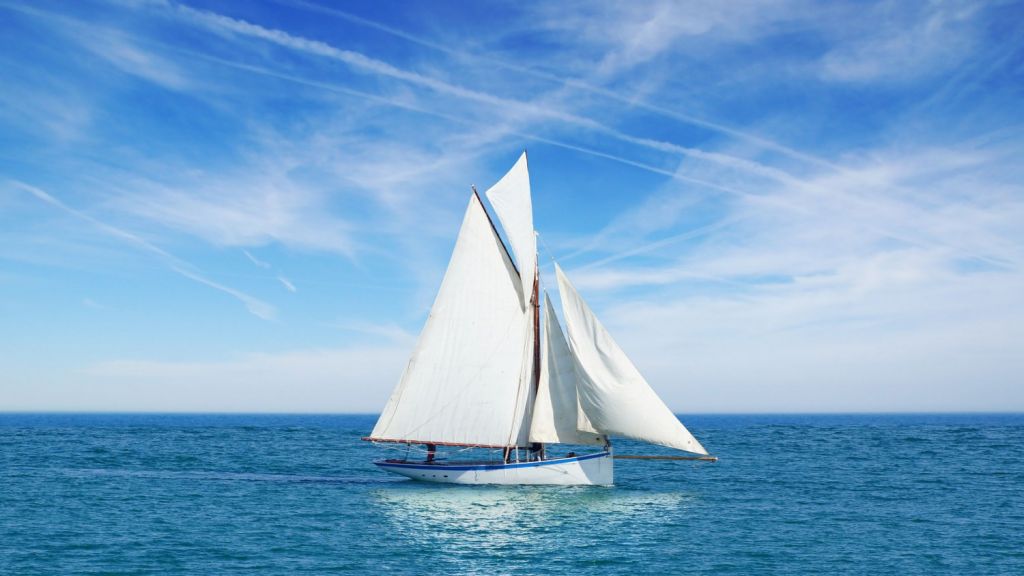

On this page:
Estimated cost for different boat lengths, how to estimate sail cost, cleaning and repairing your sails instead, factors that determine the cost of sails, when to replace sails, what material is most cost-effective, how to calculate sail cost, some sailmakers to start looking, related questions.
So I gave you a wide price range, partially because it depends on so many factors (see next heading). Let's dive more into detail here.
I've compared price quotes for 22 different sailboats and came up with the following list:
The cost of jib and main replacement
The jib and the main on a Bermuda sloop rig.
- on boats from 18' to 24' , it costs roughly $1,000 - $2,500 for the sails
- on boats from 24' to 32' , it costs roughly $2,500 - $4,000 for the sails
- on boats from 32' to 36' , it costs roughly $3,000 - $5,000 for the sails
- on boats from 36' to 42' , it costs roughly $4,000 - $7,000 for the sails
- on boats from 42' to 50' , it costs roughly $5,500 - $9,000 for the sails
The cost of main sail replacement
Only the main on a Bermuda sloop rig.
- on boats from 18' to 24' , replacing the main costs between $650 - $1,200
- on boats from 24' to 32' , replacing the main costs between $1,000 - $1,500
- on boats from 32' to 36' , replacing the main costs between $1,500 - $2,500
- on boats from 36' to 42' , replacing the main costs between $2,000 - $3,000
- on boats from 42' to 50' , replacing the main costs between $2,500 - $4,000
Please note: These are ballpark figures for basic sails. If you want to calculate the cost more precisely, read on. Or get a quote from a professional! Most sailmakers are eager to help you out (and of course to get you as a customer). The quotes by premium companies tend to be on the higher side.
Interested in the total average cost of owning & buying a sailboat? You got it! I've compared thousands of sailboat prices and the recurring costs in my in-depth article the Average Cost of Buying & Owning a Sailboat (With 4 Examples ) (new tab)
First we have to estimate the sail area.
To quickly estimate the sail area for different boat lengths, multiply the hull length (in ft) with the following ratio (I've made up):
| Boat Length | Surface factor |
|---|---|
| under 22' | 9 |
| from 22' to 28' | 15 |
| from 28' to 36' | 18 |
| from 40' to 50' | 22 |
For example, a boat of 24' will have total sail area of approximately 360 ft2.
Of course this is a very rough estimation, and you should definitely measure your sails, but for a quick cost estimation it will do.
The surface factor will only work with a standard Bermuda sloop rig, using a 100% jib and regular main.
The price of sail cloth per square foot:
You want to get the current sail cloth price per square foot. To do this, simply get a price quote for two or three different sail areas, and divide the total cost by the surface area.
I've done it with 22 quotes on January 4th, 2019:
- On average, basic Dacron sail cloth costs about $6-$7 per square foot
- This is the price per square foot for the finished sail
- It's a basic inland sail, with 2 reefs, of regular weight
- It doesn't take into account any special orders (numbering, logos, and so on)
Let's say you have a 35' sloop and want to have a quick indication of the cost of replacing the jib and main sail.
Simply multiply the boat length by the surface factor by the price of sail cloth.
35' x 18 x $6.5 = $4,095
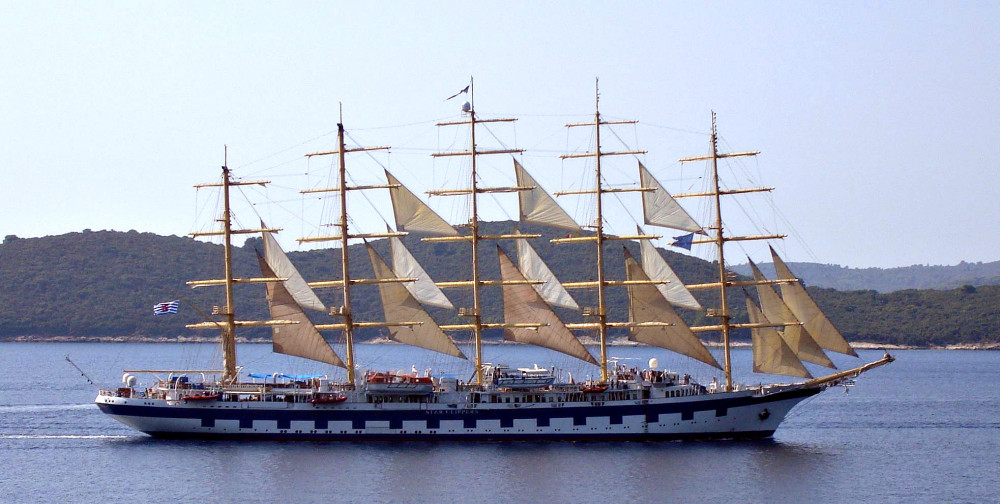
If these numbers surprise you, there's always an alternative. It can be a great idea to clean and repair your sails instead of immediately replacing them. Especially if you're an inland cruiser.
It's an idea worth considering. You can hire professionals to do it for you at 1/10 of the cost of new sails. Not bad if they can last you another 5 years or so.
I've included the sail repair company at the end of the post in my list of sailmakers.
Repairing your own sails
For large areas: If you have sewing experience (or are willing to gain it), you could very well repair your own sails. You need special heavy-duty needles and a leather sewing palm.
- If you want to give it a go, I recommend you to get this starter kit (click to check current price on Amazon ).
- You will also need some repair patches . Regular sails are mostly made of Dacron. I was very surprised at the great price of these Dacron repair strips (click to check current price on Amazon ).
This is the way to go for larger areas.
For smaller areas , you have another option. If you're not that great at sewing or don't have the patience, simply get some sail repair tape instead. It works, but it is a temporary solution at best, in my opinion.
- Check out this easy to use, heavy duty sail repair tape (link to Amazon ).
I've also noticed that you can order sails now on Amazon (crazy world). They seem to have jibs and genoas for the most popular sailboat models (Hunters, Catalinas, and so on) at a competitive price. So I definitely recommend shopping around for the best price.
There are many factors that determine the actual cost. The most important two are sail area and sail quality.
Sail area is largely determined by boat length.
Let's say there are three sail qualities available: budget sails (motor skipper), mid-priced cruising sails (about right), and performance racing sails (money is no objection).
Other factors that determine cost:
- sail quality - weight of the fabric ranging from 5.10 - 10.88oz
- rig type - ie. gaff or bermuda; roller furling or hank on
- amount of sails
- sail type - inshore or offshore; cruising or racing
Sail area is literally the amount of fabric needed for your particular boat. In general, longer boats need bigger sails. But if you use a genoa instead of a regular jib, you also require more sail cloth.
Sail quality consist of the materials used, tightness of the weave, and overall quality of the finish.
By saving on the sail quality you make sure you need to replace it sooner. This can really add up over time, if you plan on keeping your boat for half a lifetime (not everybody does, and that's fine too).
Rig type determines what kind of designs you can use. For example, a gaff rig needs a quadrilateral sail, which generally increases sail area.
If you want to see the different rig types in one overview, check out my Guide on Rig Types (new tab ) - with a great infographic !

The cost increases quite a bit if you get a roller furling main and jib.
It's easy to imagine why the amount of sails affects the total cost of replacing the sails. For most standard keelboats, the rigging consists of a main and jib, so that's what I'll use as an example here.
The sail type overlaps with sail quality. The major distinction here is inshore vs. offshore. Offshore sails are of higher quality than inshore sails. For example, inshore sails don't have reinforced clew patches, less stitching, or no double tapes. The reason is that inshore sails will probably have to deal with lighter winds.
Race sails can be more expensive than cruising sails - but the biggest cause is that they aren't made to last. Cruising sails can last you up to 10-15 years, so I'd prefer them over a budget or racing sail any day of the week.
If you want to learn the names of all the different sails, I highly encourage you to check out my Guide on Sails and Rig Types (new tab ) with lots of photos here!
When do you need to replace sails? On average, sails need replacing every 5-10 years, depending on quality of the fabric and the amount of sailing. Most people replace their sails every 7 years. You can recognize worn-out sails be excessive flapping, disintegrating stitching, and wrinkles behind the luff when on a beam reach.
The most important reasons for sail wear are:
- exposure to UV (by far the most damaging)
- flogging of sails in the wind
To make sure your sails wear as little as possible, get a good sail cover , and use it. It extends the lifespan of your sails with years, and is way cheaper than replacing them.
You can get well-priced, simple mainsail covers for most standard sizes. I recommend checking out these generic covers at Amazon .
You should definitely replace your sails if you're leaving for an ocean passage or any kind of long voyage, a race - or when they're flapping almost all the time, at all angles and with all wind speeds.
Why does it matter to replace your sails? Decent sails help you to love your boat. Bad sails will help you to hate your boat and sailing in general. Your boat will be lighter and easier to handle. Some say you gain about 1 knot speed-wise - I'm not sure but you'll definitely be faster. It becomes easier to maneuver. You'll be able to sail in much lighter air.
The list goes on. New sails really pay off.
The difference in performance is just unimaginable. If you've sailed with old sails until now, and are planning to get a new boat, maybe just consider replacing the sails.
In recent years, sail materials have developed a lot. From the 1980s onwards, nearly all sails were made from Dacron (woven polyester). In recent years, more and more sails are being made of laminated fabrics and woven nylon.
In professional racing, carbon sails are becoming increasingly popular. Carbon is the highest performing yarn currently available. Its biggest advantage is that it doesn't react to UV exposure, the number one sail killer.
In comparison, Dacron sail can withstand about 6 months of UV.
Also in comparison, Carbon is about 10-15 times more expensive than Dacron.
Some say investing in carbon sails is the way to go, but they are so expensive that they are not cost-efficient at the moment - not yet.
So let's say you replace your current Dacron sails every 7 years, and you decide to buy Carbon sails today.
It would take you 70-100 years to earn back your initial investment.
Carbon is, in a way, the Lithium-Ion of sails.
In my opinion, the best sail material for cruising is Dacron
The most cost-effective sail material is still Dacron. Although carbon sails have many advantages, they are very expensive. Dacron has a decent life span, holds its shape well, and is lightweight and reasonably priced. But it's mostly because it's so inexpensive compared to carbon yarn.
If you want to know everything there is to know about the cost-effectiveness of different sail cloths, check out this study here .
Fabric weight and cost
Heavier fabric tends to be a bit more expensive, but this is offset by the fact that smaller sails get more expensive because of the overhead cost.
So larger sails use heavier fabric, which is more expensive. Smaller sails are more expensive to stitch, attach all the hardware to, and so on.
If you're unsure about the fabric weight, here is the average fabric weight used per boat length:
- boats under 20' tend to use 5.10oz
- boats from 20' to 22' tend to use 6.18oz
- boats from 23' to 27' tend to use 7.18oz
- boats from 28' to 38' tend to use 8.18oz
- boats from 38' to 44' tend to use 9.18oz
- boats from 45' to 50' tend to use 10.18oz
- boats over 50' tend to use 10.88oz

The price of a sail is calculated by first calculating the sail area. The official way to do this is by getting out your calculator and typing in the following formulas:
Calculating Mainsail Area:
Mainsail area = P x E / 1.8 where: P = Luff length E = Foot length
Calculating Headsail Area:
Headsail area = I x J / 1.8 where: I = Mast length J = Luff to headstay
Let's calculate the sail area of something real quick. Here are the rig dimensions of a 22' Abbott:
| I | J | P | E |
|---|---|---|---|
| 28 ft | 9.75 ft | 23.5 ft | 8 ft |
| 8.53 m | 2.97 m | 7.16 m | 2.44 m |
For the mainsail , I use P (luff length) and E (foot length).
23.5 x 8 / 1.8 = 104.4 ft2 or 7.16 x 2.44 / 1.8 = 9.71 m2
For the headsail , I use I (mast length) and J (luff to headstay).
28 x 9.75 / 1.8 =151.7 ft2 or 8.53 x 2.97 / 1.8 = 14.1 m2
Now add these two and multiply by the cost of sail cloth.
Generally, this method gives you too little surface area. I've found that for standard sloop rigs, my factor-formula was more accurate (which doesn't make sense at all) . I highly recommend to simply measure your old sails, which is a great Sunday afternoon chore.
- SailCare - so many people are satisfied with this company. They don't replace, they repair. First one I'd check
- Rolly Tasker Sails - are known to deliver good quality and being the cheapest around
- Quantum Sails - making a name for themselves in professional yacht racing
- Neil Pryde Sails - a bit more expensive but highly recommended by others
- UK Sail Makers - well-known sailmakers
- North Sails - well-known name in the industry, but are they notorious or famous? (hint: it's the former)
What's the Difference Between Cruising and Racing Sails? Racing sails are generally more lightweight and made of better materials (such as carbon) than cruising sails. This makes them a lot more expensive. Cruising sails are mostly designed to be cost-effective, durable and easy to handle, sacrificing some performance by the choice of materials. Most cruising sails are still made of Dacron.
How Much Does a Sailboat Mast Cost? A new mast costs anywhere between $15,000 - $25,000, depending on your wishes. Roller furling masts start at $20,000. However, you can get a used mast for as little as $2,000. This is without the standing rigging, which will add an additional $4,000 on average.
Are Sailboat Sails Waterproof? Most sails are watertight thanks to multiple protective layers, but they aren't completely waterproof. Dacron, the most-used sailcloth, is pretty watertight, thanks to its tight weave. But eventually, the water will soak the cloth. However, the more expensive carbon sails are fully waterproof.
List of boats I've used as a source:
(Showing model - total sail surface - weight of sail cloth - total price quote)
- 18' Valiant - 14.5m2 - 5.10oz = 910 €
- 21' Hinckley - 45.5m2 = 6.18oz = 2500 €
- 22' Abbott - 33.4m2 - 6.18oz = 1900 €
- 22' Catalina - 20.8m2 - 6.18oz = 1300 €
- 27' Abbott - 35m2 - 7.18oz = 2000 €
- 32' Valiant - 52.3m2 - 8.18oz = 3000 €
- 32' Beneteau - 47m2 - 8.18oz = 2650 €
- 34' Hinckley - 56m2 - 8.18oz = 3200 €
- 34' Hallberg-Rassy - 51.3m2 - 8.18oz = 2900 €
- 36' Abbott - 56m2 - 8.18oz = 3200 €
- 36' Hallberg-Rassy - 61m2 - 8.18oz = 3400 €
- 36' Catalina - 58m2 - 8.18oz = 3200 €
- 38' Beneteau - 67.4m2 - 8.18oz = 3700 €
- 40' Valiant - 82.4m2 - 9.18oz = 4600 €
- 41' Hallberg-Rassy - 78.3m2 - 9.18oz = 4300 €
- 41' Hinckley - 71.4m2 - 9.18oz = 4000 €
- 435 Beneteau - 87.2m2 - 9.18oz = 4900 €
- 46' Hallberg-Rassy - 100m2 - 10.18oz = 5600 €
- 47' Valiant - 108m2 - 10.18oz = 6100 €
- 48' Hinckley - 104,2m2 - 10.18oz = 5900 €
- 48' Tayana - 108.2m2 - 10.18oz = 6100 €
- 50' Beneteau - 104m2 - 10.88oz = 6200 €
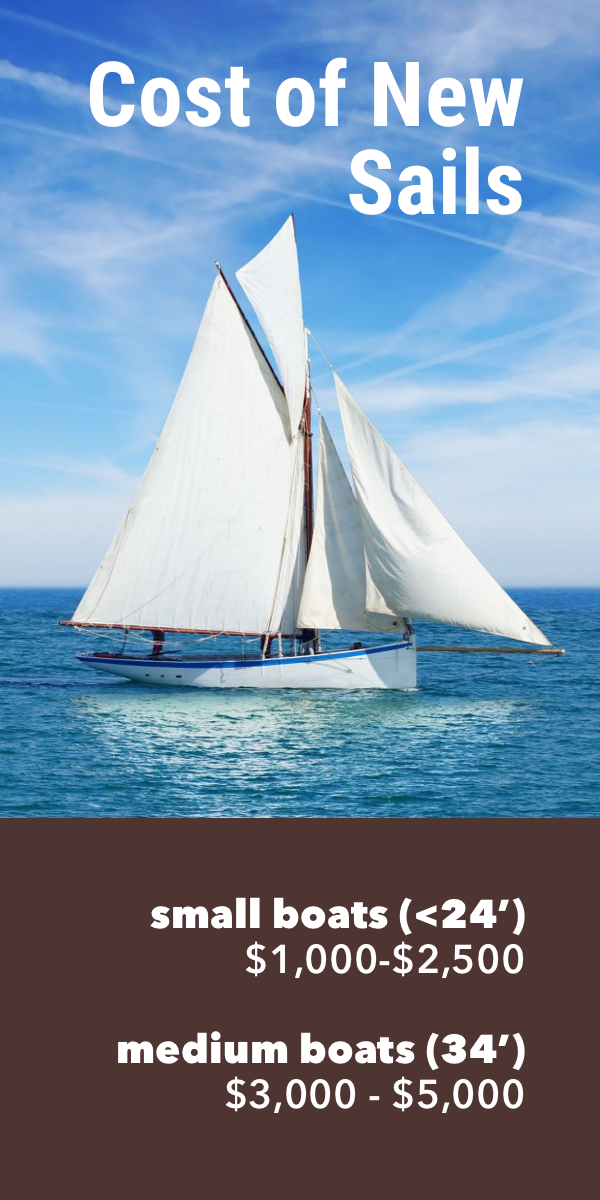
Mike Freauf
Thanks for the article, it was very helpful in regards to getting new sails.
Shawn Buckles
I’m glad to be able to help.
Fantastic ready reckoner. I’ve also watched some of your vids - all good stuff
Thanks for the info! Helps out.
Thanks for the info!!
Looking for ~ costs of good sails for a 64’ ocean SV and your figures only go to 50’. Thank you
What an amazing post. Simple, no anoying add´s on the midle, objective information.Now a days very rare. amazing
I never sailed in my live yet. never get that opurtunitiy, i am simple a traveer. but now I am obcessed with the idea. I am welder , builder, I could very easly make a aluminium boat way cheaper and way better than those manufactures like garcia, owen clark, allures and many others that charge fortunes for something with poor construction quality for the money. I am a follower of this page, channel. I am trying to figure out the total costs of materials needed. thanks
Klaus-Jürgen Lauth
Excellent analysis which certainly is helpful for a first estimate. Am checking the above sailmakers now to come to terms… What could be added maybe is where and under waht circumstances one can find good used sails / riggs. Thanx a lot for your professional help. Klaus J.
Leave a comment
You may also like, how much sailboats cost on average (380+ prices compared).
Turns out that owning a sailboat is pretty affordable. OK, it isn't cheap, but it can absolutely be done on a budget. In this article, I'll show you exactly what to …

Guide to Understanding Sail Rig Types (with Pictures)

The Ultimate Guide to Sail Types and Rigs (with Pictures)

3 Ways to Convert Your Winches to Self-Tailing
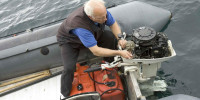
How to Clean Marine Exhaust Manifolds (The Best Way)

How Much Do New Sails Cost And Do You Really Need Them?
Wondering how much new sails cost and whether you really need them.
If you’re a sailor, the prospect of replacing your sails may be daunting. You might think that new sails are expensive and maybe not worth it, but this simply isn’t true.
We were thrilled to find that the whole process, from inspecting your sails to work out whether they need replacing, through to ordering new ones for your sailboat, is actually really quick and easy. The longest part of the whole process is waiting for them to be made, which is also the most exciting part!

Quality sails will improve sailing performance, save fuel costs in the long run and really help you get more out of your time on the water! We noticed a huge difference in sailing performance when we swapped out our old sails. The main sail alone gave an extra knot performance.
In this blog post we’ll take a look at what to expect when looking for new sails and how much they’re likely to cost so that you can make an informed decision about whether or not it’s worth investing in them.
Table of Contents
What variables effect the cost of sails, light wind sails, storm sails, how do you know if you need new sails, how much difference does a new sail make, assessing damage to your old sails, which sails are you replacing, how do you sail, choosing sail material.
- Extra Considerations
Where To Buy New Sails
How to buy new sails, how long do new sails last, prolonging the lifespan of your new sails, how much do new sails cost.

It’s hard to give a simple answer to this. As with so many things in sailing, the cost of your new sails will depend on a range of variables.
We’ll look at some of the things that affect the cost of sails and go through some rough estimates below.
Many different variables can affect the cost of sails for a sailboat. Some of the main things to consider when trying to budget are:
- The type of sail
- The size of the sail/your boat
- The sailcloth material you choose
- Where you buy your sails from
- Additional features you might think about adding, like extra reefs or battons
Main Sail Rough Estimates
This is a rough estimate based on quotes from a variety of different sailmakers, but prices can vary massively depending on the variables listed above.
- Cost of sails for a 42′ to 50′ sailboat = $2,700-$6000
- Cost of sails for a 36′ to 42′ sailboat = $2,000-$5,000
- Cost of sails for a 30′ to 35′ sailboat = $1,500-$3,000
- Cost of sails for a 24′ to 30′ sailboat = $1,000-$2,500
Genoas and Jibs
- Cost of sails for a 42′ to 50′ sailboat = $5000-$10,000
- Cost of sails for a 36′ to 42′ sailboat = $4,000-$8,000
- Cost of sails for a 30′ to 35′ sailboat = $2,000-$5,000
- Cost of sails for a 24′ to 30′ sailboat = $2,000-$4,500
What is a jib sail?
These are based on quotes for a spinnaker. Other light wind sails may vary slightly in price ranges, and you will need to think of additional equipment needed to fly your light wind sails if your boat isn’t already set up for one.
- Cost of sails for a 42′ to 50′ sailboat = $3,000-$5000
- Cost of sails for a 36′ to 42′ sailboat = $2,000-$4,000
- Cost of sails for a 30′ to 35′ sailboat = $1,300-$3,000
- Cost of sails for a 24′ to 30′ sailboat = $700-$2,500
A storm sail is a staple of every sail wardrobe, but the good news is that these are likely to need replacing rarely if you’re a cruiser. Chances are your storm sail will be stowed somewhere it’s protected from the elements and very rarely used.
Saying that, you should regularly inspect it for signs of wear so that you always have one in perfect working order for when it is needed. This is a piece of safety equipment and should be treated as such.
- Cost of sails for a 42′ to 50′ sailboat = $2,000-$3000
- Cost of sails for a 36′ to 42′ sailboat = $1,500-$2,500
- Cost of sails for a 30′ to 35′ sailboat = $500-$1,000
- Cost of sails for a 24′ to 30′ sailboat = $200-$700
To get an exact quote contact Precision Sails , one of the best sailmakers around. They will be able to help you find the right sail for the job, and bring it in on budget.

Before you even think about purchasing new sails you’re going to want to work out whether or not you actually need them.
Our cruising sails are nearly 15 years old and are definitely at the point where they need to be replaced.
Cruising sails tend to last a lot longer than race sails because owners don’t usually push their boats as hard, and the material can afford to be a longer-lasting cloth rather than one designed for absolute optimum performance.
Sail Performance
One of the first signs that your sail is due to be replaced is that you won’t be getting the same performance as you used to.
As sails age they start to bag, and using them to sail upwind becomes harder and harder. We found we were losing upwind sailing performance quite rapidly, and if we hadn’t replaced our sails our tacking angle could have become quite dangerous.
You never want your sails to be too old to pull you off a lee shore in an emergency!

Just because you’re still sailing well it doesn’t mean you should neglect regular sail inspections to make sure they are still in tip top condition.
There are some really simple checks you can do to make sure your sails don’t need a repair or replacement. We tend to do these checks every year at the end of the season, but we also regularly sight-inspect them too while we’re out sailing.
Obviously you should also check your sails over really thoroughly before any longer crossings, and it’s a good idea to have spare sails in your locker for ocean crossings too.
But how do you properly assess the condition of your existing sails?
There are some important parts of the sails to pay attention to when checking them. These are the areas that see the most wear or are more prone to sun damage.
- The leech (try to poke your thumbnail into the weave, if you can then it’s in less than ideal condition)
- Spreader patches (these were the first area to deteriorate on our sails)
- Batten pockets
- The stitching
The stitching is more fragile than the actual sail cloth and likely to start deteriorating first. Run your finger along the stitches and you’ll see if any are starting to pull or are frayed or damaged.
It is possible to repair sails with new stitching or patches for a little while, but it’s a sign that they are on their last legs so keep an eye on your sailing performance and make sure you replace them before undertaking any major crossing.

A new sail can make a huge difference to sailing performance.
It may surprise some to find out just how much difference a new sail can make on a sailboat. While you may think the differences are minimal and cosmetic, this couldn’t be further from the truth.
A new sail changes a variety of important factors when sailing– elements like drag, speed, power and maneuverability.
With the right combination of skills and materials, these improvements can last through many years and help provide stability while on the water.
Sailors especially appreciate the improved performance associated with these modifications.
Anoether important thing to consider is your ability to sail upwind. As an old sail becomes more and more bagged out, it can hinder your ability to sail upwind dramatically. It can even make your tacking angle useless in clawing off a lee shore, putting you and your boat in danger.
In short, it’s never been more true to say that every inch counts when putting in a new sail!
You Need New Sails, Now What?
If it no longer makes financial sense to repair your sails then you should look at replacing them, but how do you go about such a seemingly big task?
It actually isn’t that complicated, and we were pleasantly surprised by how little time it took to sort out a replacement mainsail for our 45ft sailboat.
Here are the steps we followed to ensure a smooth purchase.

The first thing you’ll need to consider is obviously which sail or sails you are replacing. If you need a new upwind sail then you may well be able to purchase one ‘off the shelf’ without paying extra for a custom made sail.
If you’re replacing your main sail or head sail then you will want to find a decent sailmaker that you really trust, who can make you a custom sail that will fit your boat like a glove.
Another important consideration when looking into new sails is what kind of sailor you are and the intended purpose of these new sails.
Are you a race sailor hoping to get the absolute best performance from your sails? Or would you prefer a mixture of performance and durability?
If you’re off on a circumnavigation then the ability to repair your own sails may be far more important than having the high tech material.
If you sail in places like the Carribbean where your sails are explored to extremely high levels of UV then you’ll want to consider the ways in which they will be protected from the sun. If you like a bit of spice and often head out in heavy weather then a more durable sail cloth might be the way to go.
No matter how you like to sail, make sure you discuss these types of things with your sailmaker so they can give you the best advice on the kind of sails you will need.

Luckily (or perhaps unluckily if you’re someone like me who really hates too much choice!) the world of sail cloth has come on in leaps and bounds.
It used to be that Dacron was really the only choice out there for sailors, and the only thing you had to decide was the grade you wanted.
Now there is a huge range of sail material to choose from depending on what you use your sailboat for, where you sail it and what you need from your sails.
We’ll delve into some of the more common types of sail cloth below. Remember that each different type comes with a different price tag, so you’ll want to take this into consideration if budget is important.
Woven Dacron
This is still the most popular option of sail materials for cruisers as it’s the least expensive and one of the most durable.
There are several different types of Dacron sail, those more commonly used by cruisers and those preferred by racers. The kind designed for cruisers have more give in high winds, so they tend to last longer. Dacron used by racers tends to be coated in melamine to reduce stretch.
The biggest downside to Dacron sails is the fact that they do tend to lose their shape even when there is still life left in them. As most cruisers aren’t sailing with performance as a priority, this is usually a comproimise they are willing to take.
Laminate Sails
Laminate sails are most commonly used by race sailors because they retain their original shape for much longer than other sail materials.
There are several different types of laminate. Polyester for example, is used in Dacron sails as well as laminate sails. In a Laminate sail, the fibers are secured between the Mylar films without being woven together. This is a cheaper material that is a little more forgiving in heavy weather, but will stretch more easily.
Ultra PE (Kevlar, Dyneema, Spectra) offer very good UV resistance and low stretch but is a costly material that tends to be used in larger sailboats.
Carbon Fiber sails are the lightest, stiffest fibers on the market. They provide the greatest resistance to stretch under initial load and over the lifetime of the sail but these sails need to be taken care of carefully as they can rip easily.
You can now get cruising laminate sailcloth which is designed to provide higher performance and less stretch. Some cruising laminate sails have layers of Taffeta laminated on top of the Mylar film which reduces delamination but adds weight.

Luckily the days are long gone when you needed to find a decent ‘sailmaker’ at your marina or boatyard.
It’s a little misleading to think sailmakers are doing business locally, and therefore custom making your sails on-site. In reality, most sailmakers are franchises of much bigger companies, and you’re simply paying extra for a middleman to send off your order.
You can now cut out the extra cost and hassle of having to find a company locally, by ordering from an online company such as Precision Sails.
We chose Precision Sails after quizzing a whole load of other cruisers on their favourite sailmakers. It was a resounding win for Precision Sails.
We were fully prepared to go with a different company if we didn’t feel comfortable with them on our first call, but honestly, we were very impressed and still are one sail later!
We spoke to several different members of staff on our ‘journey’ and they were all professional, knowledgeable and keen to help in any way they could.
They were clear about their backlog after COVID and let us know wait times on our sail (which was actually way less than they prepared us for), they were affordable and we felt they had the best choice of sails for cruising sailboats like us.
Don’t take our word for it though, go get a quote from them and have a discussion about the best type of sails for your boat . We can gaurantee you’ll love them as much as we did!
- Professional sail design in North America
- Thousands of top-quality sails produced every year
- Dedicated staff to help you take your sail measurements
- Rock-solid warranty on all sails
- Over 250,000 types of sails for over 15,000 sailboat models
- Perfect Fit Guarantee
- Worldwide service and shipping
Can You Buy Second-Hand Sails?

We were absolutely fascinated to find out that buying second hand sails for your boat is a really bad idea.
We had assumed that if you owned a popular brand of sailboat then it would be find to buy a second hand sail from a boat of the same make. Surely all boats are made the same, and therefore a sail that fits one should fit them all?
Apparently, this is absolutely not the case.
Even though the designs of these boats are the same, there will all be slight irregularities. Production companies make the boats in batches, and depending on which companies will batch sell them stocks the cheapest, this os what they will run with.
So there’s no guarantee that one Beneteau 42 will have the same mast and fittings as another Beneteau 42.
Precision Sails input every boat measurement into their database, so they can see all the variations between sailboats. They can tell you roughly which ballpark measurements will be in, but they can’t say for sure the measurements of your sail even if you have a very popular brand of boat.
You should order main sails and jibs to be custom made to ensure they fit your own boat exactly.
We were a little intimidated by the whole sail buying process, but were thrilled to find out it is a lot easier than you might think.
If you buy your sails from a sailmaker franchise then they will probably offer to come and do all the measuring up etc for you. While you will pay extra for this it does mean you don’t have to do any extra work.
One of the best things about doing the initial part of process yourself is that you learn so much about your boat, and we found the whole process super easy even though we aren’t the most technical people.
If you buy through Precision Sails they have written and videoed instructions which are really easy to follow and the whole process only took a few hours.
Below is a simplified look into how we ordered our sails.
Choosing Design and Material

First of all you’ll want to arrange a meeting with your sail designer to go through the best design and material for your sailboat and cruising style.
The needs of a race sailor will differ greatly to the needs of a cruiser, and where you sail will also have an impact on the type of sail you want to go for.
We had a really in depth meeting online with the sail designer at Precision Sails, and we felt super happy with his recommendations and learnt so much about the whole process.
We were able to discuss our own sailing style and he had some really great advice for us on things like reefs and where to put them, the type of cloth we should opt for for maximum performance vs durability, and even things like how we should run our lines for solo sailing.
If you feel uncomfortable in your initial meeting with the sailmaker then you should reconsider which company you work with. Investing in new sails is a big expense and you want to be 100% satisfied with the service you’re getting.
The sorts of questions you ask will be unique to your situation, but some things you might want to consider are:
- The sail cloth they would recommend for the type of sailor you are
- How many reefs and how deep
- The cut of your sail
- Where they get their sails made (most are manufactured in Asia)
- What fittings will be included
- What the lead time is on sails and the price of delivery
Measuring Up
You will need to measure up for your new sail or sails. You want them to fit exactly, and the only way to ensure they do is by getting an accurate measurement for your specific boat.
With Precision Sails this was a simple process, and you can watch some of their videos to get an idea of what you’ll need to do before you meet with them.
Once you’ve given the sailmakers your measurements they will be able to create a mock up and work out whether or not your measurements are accurate. They can see whether you’ve done something silly through their own calculations which was really reassuring considering we had never done something like this before.

If you only take your boat out a few times per year, you might be able to get away with replacing your sails every 10 years or so. Our head sails lasted 12 years before they were in serious need of replacement.
But if you use your boat frequently or sail in rough waters, you might need to replace them more often.
This is also a personal choice, as you might be happy sailing a little slower with older, bagged-out sails, or you might want optimal performance from your sails at all times.
This is a commonly asked question so we’ve delved into it in a lot more detail in our post ‘ how long do new sails last? ‘
With proper care and regular maintenance, your new sails should last for quite a few years. Here are some tips to help you extend the life of your sails:
1. Inspect your sails regularly, both by sight while sailing and a more thorough check when you take them down. Look for rips, tears, or fraying edges and repair immediately to prevent the damage from getting worse.
2. Store your sails properly when not in use. You can keep them in a sail loft during your off season, or store them somewhere dry and out of sunlight.
3. Don’t leave your sails rolled up for extended periods of time. This can cause them to become misshapen and difficult to use.
4. When furling or reefing your sails, be gentle to avoid damaging the fabric.
5. Have your sails professionally cleaned and inspected at least once a year, or learn to inspect them properly yourself. This will help identify any potential problems so they can be fixed before they cause major damage.
Conclusion: How Much Do New Sails Cost

To conclude, if you are in the market for new sails then it is important to consider all of the variables that will affect the final cost. The size and type of sails you need, as well as the condition of your existing rigging, will all play a role in determining how much you ultimately pay.
By getting multiple quotes and doing some research ahead of time, you can be sure to get the best possible deal on your new sails.
✅ Get a quote from Precision Sails now
Similar Posts
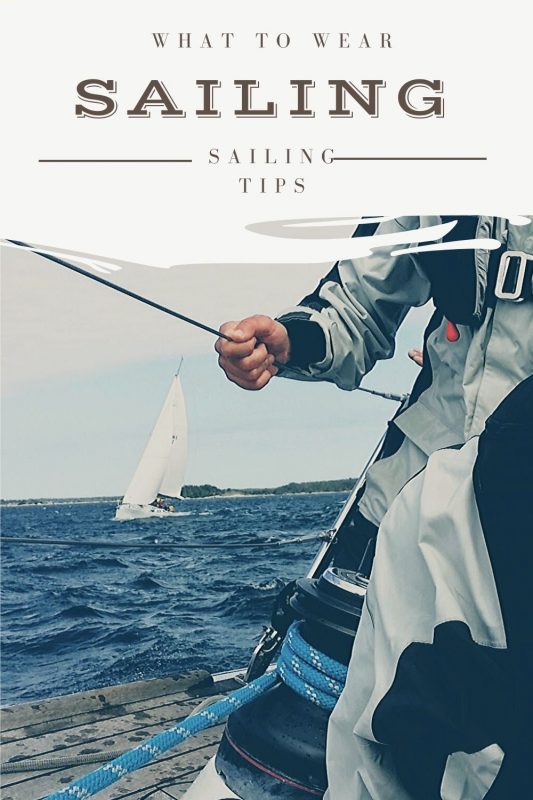
What To Wear Sailing 2024 (& What Not To Wear!)
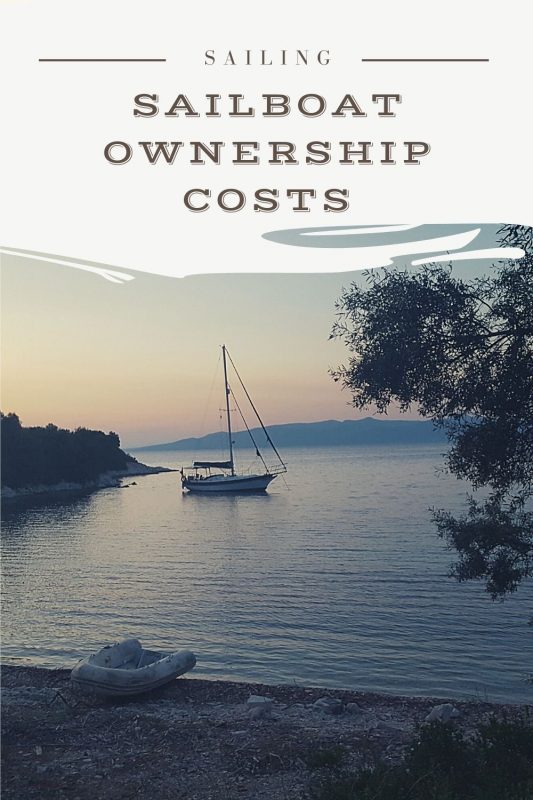
What Is The Cost Of Owning A Sailboat?
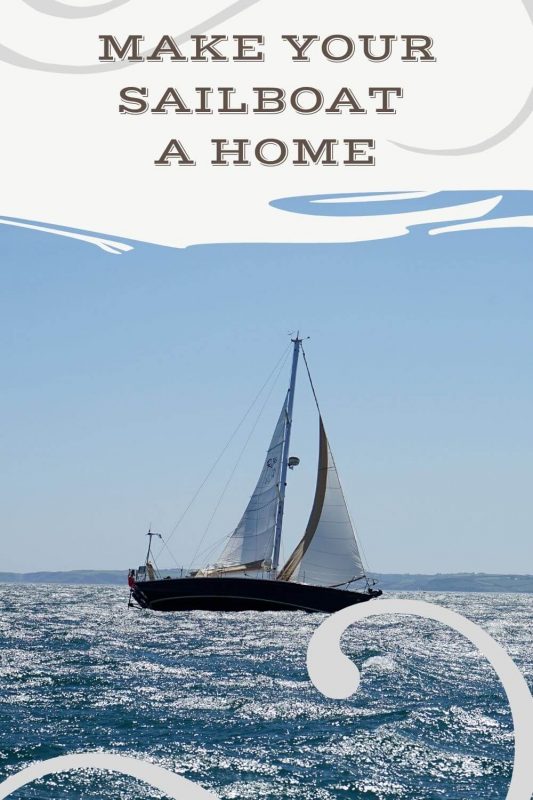
Making Your Sailboat Feel Like Home: Must Have Home Comforts

Why Are Sails Triangular?

LiFePO4 vs Lithium-Ion Batteries 2024

Can You Sleep While Sailing?
Sail Types: A Comprehensive Guide to 8 Types of Sails
Sails are the driving force behind sailboats, harnessing wind power to propel a vessel across the water. For both novice and seasoned sailors, understanding the different types of sails is essential. Various sails serve specific purposes, depending on wind conditions, boat type, and sailing goals. In this comprehensive guide, we’ll explore eight key sail types, their functions, and the specs and costs associated with each.
1. Mainsail
The mainsail is the primary sail on most sailboats, mounted to the back of the mast and along the boom. It provides most of the boat’s power, especially when sailing upwind.
Function: The mainsail is crucial for both upwind and downwind sailing. Its size and shape allow for efficient wind capture, giving the boat forward momentum.
Material: Most modern mainsails are made of Dacron (polyester), but high-performance options might use laminate or Kevlar for added strength and durability.
Size: Varies based on boat size. A 30-foot sailboat may have a mainsail of around 250-300 square feet.
Price: A Dacron mainsail for a 30-foot boat typically costs $2,500 – $3,500. Performance materials can cost upwards of $5,000.
The jib is a smaller sail that is positioned in front of the mainsail, attached to the forestay (a wire or rod that runs from the bow to the mast).
Function: The jib complements the mainsail, improving maneuverability and speed, especially when sailing upwind.
Types of Jib:
- Working Jib – Smaller and used in strong winds.
- Genoa – A larger jib that overlaps the mainsail, providing more power in lighter winds.
Material: Like the mainsail, Dacron is the most common fabric, but high-performance boats may use laminate or Kevlar.
Size: A working jib on a 30-foot boat is around 200 square feet, while a genoa can be 400 square feet.
Price: Working jibs range from $1,000 to $2,500. Genoas are typically more expensive, costing between $2,500 – $4,500.
3. Spinnaker
Spinnakers are large, balloon-like sails designed for sailing downwind. They are often colorful and made from lightweight nylon.
Function: The spinnaker is used when sailing with the wind behind the boat. Its large surface area allows it to catch as much wind as possible for maximum speed.
Types of Spinnaker:
- Symmetric Spinnaker – Ideal for broad reaches and runs, requiring a spinnaker pole for stability.
- Asymmetric Spinnaker – More versatile, allowing for easier handling without a pole. Best for reaching across the wind.
Material: Spinnakers are typically made of nylon due to its light weight and flexibility.
Size: On a 30-foot boat, a spinnaker may range from 500 to 1,000 square feet, depending on the type.
Price: Symmetric spinnakers generally cost between $2,000 and $4,000, while asymmetric ones range from $3,000 to $6,000.
4. Gennaker
A gennaker combines elements of both the genoa and spinnaker, offering versatility for downwind and reaching conditions.
Function: It is primarily used for reaching (when the wind is coming from the side of the boat) and light downwind sailing, offering a balance between speed and ease of handling.
Material: Made from lightweight materials like nylon, similar to a spinnaker.
Size: On a 30-foot boat, a gennaker is usually around 600-800 square feet.
Price: A gennaker typically costs between $2,500 and $5,000, depending on size and material.
5. Storm Jib
The storm jib is a small, heavy-duty sail designed for use in severe weather conditions.
Function: When the wind becomes too strong for a normal jib, the storm jib provides the control needed to keep the boat safe. Its smaller size reduces the sail area exposed to high winds, preventing the boat from being overpowered.
Material: Storm jibs are made from strong, durable materials like heavy Dacron or reinforced laminate.
Size: A storm jib on a 30-foot boat might be around 75-100 square feet.
Price: Storm jibs cost between $1,000 and $2,000, depending on size and material.
6. Code Zero
The Code Zero is a light-wind sail that falls between a genoa and spinnaker in terms of function. It’s typically used in light upwind or close-reaching conditions.
Function: The Code Zero offers maximum sail area for light wind conditions, allowing the boat to maintain speed when the wind is light but not fully downwind.
Material: It is made from laminate or light Dacron, offering a balance between weight and durability.
Size: On a 30-foot boat, a Code Zero may range from 400 to 700 square feet.
Price: A Code Zero sail typically costs between $3,000 and $6,000.
A drifter is a light-wind sail that is used when the wind is too light for the jib or genoa. It’s similar to a spinnaker but is easier to handle.
Function: The drifter helps the boat maintain speed in very light winds, especially when sailing upwind or on a close reach.
Material: Like spinnakers, drifters are made from lightweight nylon .
Size: A drifter on a 30-foot boat may range from 400 to 600 square feet.
Price: Drifters generally cost between $2,500 and $4,000.
8. Wing-on-Wing (Downwind) Sail Setup
While not a separate sail type, this technique is used for sailing downwind by positioning the mainsail and jib on opposite sides of the boat, maximizing the sail area exposed to the wind.
Function: When sailing directly downwind, the wing-on-wing setup optimizes wind capture from both the mainsail and jib, improving speed.
Material: The same materials used for the mainsail and jib apply.
Size: Depends on the size of the mainsail and jib being used.
Price: No additional cost beyond the mainsail and jib, but some sailors invest in a whisker pole ($500 to $1,500) to hold the jib in place.
Understanding the different types of sails and their functions is crucial for maximizing your sailing experience. Whether you’re outfitting a new boat or upgrading your existing sails, choosing the right sails for your sailing style and conditions is key. From the versatile mainsail to specialized sails like the spinnaker or storm jib, each sail type serves a purpose in helping you harness the wind’s power. Keep in mind the price ranges and specifications when selecting sails for your boat to ensure you get the right sail for your needs, budget, and sailing environment.
Happy Boating!
Share Sail Types: A Comprehensive Guide to 8 Types of Sails with your friends and leave a comment below with your thoughts.
Read Fall Boating: 6 Reasons to Keep Boating into Autumn until we meet in the next article.
Similar Posts
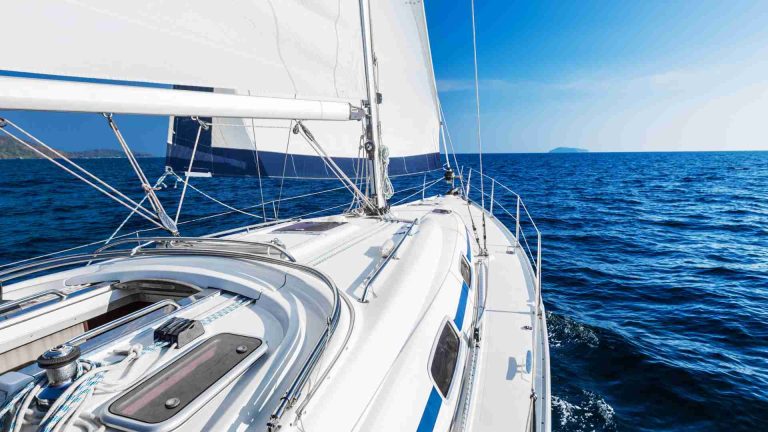
8 Differences Between Monohull and Catamaran Sailboats
There’s a certain magic to sailing, where the wind whispers ancient tales and the open sea beckons with promises of adventure. For those who’ve succumbed to its allure, the journey begins with a fundamental decision: the choice of the right sailboat. Among the constellation of options, none shines brighter than the decision between a monohull…

4 Most Common Problems with Nitro Z18 Bass Boat
The Nitro Z18 is a popular choice among bass fishermen, known for its performance, versatility, and sleek design. But even the best boats aren’t immune to occasional hiccups. So, if your Z18 isn’t behaving like its usual self, don’t fret! This guide delves into the most common problems Nitro Z18 owners encounter and offers tips…

How Fast Do Pontoon Boats Go?
Pontoon boats have carved a unique niche in the world of recreational boating. These vessels are celebrated for their leisurely cruising, spacious decks, and the sheer sense of relaxation they offer as you glide across calm waters. But amid the tranquility that pontoon boats provide, there’s a curious question that often arises: Just how fast…

Sea-Doo Speed Boats: Conquering the Waves
Carving through the water, feeling the spray mist your face, and the wind whipping through your hair – that’s the exhilarating experience a Sea-Doo Speed Boat offers. But these aren’t your average leisure crafts. Sea-Doo Speed Boats are high-performance machines designed for adrenaline-pumping adventures and exhilarating rides. This guide dives deep into the world of…

Man on Boat Fishing: A Look at the Timeless Tradition
There’s a certain image that comes to mind when we think of fishing: a lone figure perched on a boat, casting a line into the shimmering expanse of water. This image, both peaceful and solitary, captures the essence of what draws many to the experience of man on boat fishing. It’s a pursuit steeped in…

Boat Butt Seats: Comfort, Features, and Buying Tips
When it comes to enhancing comfort on a boat, a well-designed butt seat can make all the difference. Whether you’re spending hours fishing, cruising, or just enjoying a day on the water, a butt seat offers the support and comfort needed to keep you going. This guide will cover everything you need to know about…
Better Sailing
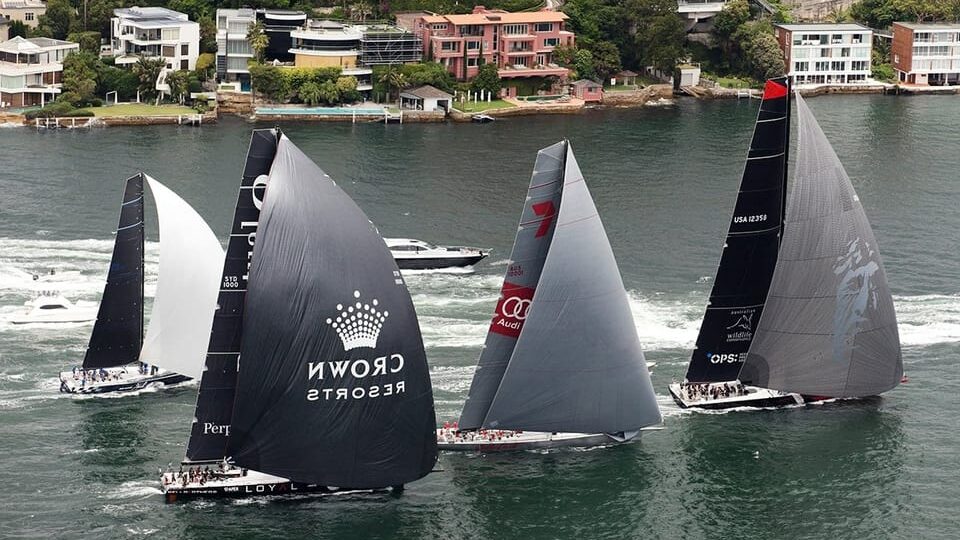
How Much Do New Sails Cost?
Purchasing new sails is a big investment for many sailboat owners and a task that you won’t have to make again for a while. There are different choices you can make according to your sailboat. However, with all these offers you have to make sure you don’t make an irreversible mistake. On a cruising boat, sails might seem they can last forever. And, sometimes it’s difficult to say when is the appropriate time to replace them. So, it’s important to change them that the time comes that your old sails can’t propel you upwind off a lee shore and when you need them most. In this article, I will explain some basic things about sails as well as how much do new sails cost. So, keep reading!
Types of Sails
The main types of sails on sailboats include the mainsail, the headsail, or jib, the spinnaker, the gennaker, as well as the genoa. Moreover, there are numerous configurations regarding the type of sail and the mast. These include the sloop rig, the fractional rig sloop, ketch, yawl, cutter, schooner, and cat.
So, basically, each sail has its own unique purpose when out on the water. As you already know, the sail acts like the engine of your sailboat as it is the main source of propulsion. Subsequently, it’s of high importance to be aware of when to use either type of sail and for what reason.
Firstly, the mainsail is by far the most common sail on sailboats, and it is often the first picture that comes to mind when thinking of a sailboat. The mainsail is located behind the mast and attached to the boom, making it a popular part of the sailboat to keep an eye on since it occupies a lot of space.
When it comes to incoming winds, mainsails can cover a lot of surface area, particularly since they’re attached to the boom. They don’t need very strong winds to provide good forward propulsion on a sailboat because of their wide surface area. Furthermore, since the boom allows for easy configuration of the mainsail position, all points of sail are easily accessible. Mizzen on yawls and ketches are examples of mainsails. They’re the main driving force and should have anywhere from one to four reefs mounted.
Since it typically goes with the mainsail, the headsail (or jib) is possibly the second most common type of sail on sailboats. The headsail is often positioned in front of the mast and can cover a significant portion of the sailboat’s bow. It’s much smaller than a mainsail, making it easier to transport and operate with. Since headsails are smaller than mainsails, they have a smaller surface area, which means they can’t catch as much wind as a mainsail. However, if the current wind is particularly strong and your mainsail has been adequately trimmed, you will be able to put your mainsail away and rely solely on your headsail, which is an excellent technique for reducing speed.
Genoas and jibs are examples of foresails that can be found on cutter-rigged vessels. A single roller curling foresail is standard on most vessels. Some, on the other hand, have single-standing sails that come in a variety of shapes and sizes and are tailored for various wind strengths. When the winds are stronger, for example, you can use larger foresails, and when the winds are calm, you can use smaller foresails. Spinnakers are another important type of sails. Asymmetric and symmetric spinnakers, as well as code zeros and cruising chutes, are examples of downwind sails.
There are also storm and heavy weather sails such as storm jibs and trysails that are important for protection. This applies particularly in case you sail offshore frequently and will likely encounter difficult conditions. Given that reefing genoas have incompetent shapes, particularly when heavily reefed in strong winds, a smaller but heavier weather jib is recommended. You can set it as part of a removable inner forestay.
>>Also Read: Names of Sails on a Sailboat
Main Factors that Determine the Costs of Sails
The real cost of sails is determined by a number of factors. But, sail area and sail quality are the two most significant factors. Keep in mind that the sail area is primarily determined by the length of the voyage. Let’s assume that there are three types of sails: budget (motor skipper), mid-priced cruising sails (about right), and value racing sails (high performance).
So, firstly, the sail area refers to the amount of fabric needed for a specific boat. Longer vessels, in general, require larger sails. However, if you use a genoa rather than a standard jib, you’ll need more sail fabric. As for the sail quality, it consists of the materials that make up the sails, the tightness of the weave, and the overall quality of the finish. And keep in mind that when you lower the sail’s quality, you will have to replace them earlier. And, if you plan on holding your boat for half a lifetime this will lead to faster deterioration.
Sail type, as well as sail quality, are quite similar. The main difference is between inshore and offshore use. Meaning that offshore sails are better than inshore sails in terms of cost. Inshore sails, for example, lack strengthened clew patches, less stitching, and no double tapes. The explanation for this is that inshore sails would most likely encounter lighter winds. Moreover, race sails are more expensive than cruising sails for a variety of reasons, the most important of which is that they are not designed to last.
In addition, the number of sails also influences the overall cost of sail replacement. And, keep in mind that the rigging for most regular keelboats consists of a main and jib, but many sailors put more sails in order to improve speed and performance. Moreover, the type of rig determines which designs you can use. A gaff rig, for instance, requires a quadrilateral sail, which increases sail area. If you add a roller furling main and jib, the price jumps significantly.
Damage to your Old Sails
It’s critical to understand the areas of your current sails that are vulnerable to tear and wear while determining their structural strength and damage. Although you should inspect every area of the sails, the inboard batten pocket, leech, and spreader patches should receive special attention. You should also keep in mind that the sun will chafe and damage the stitching on your sails before the material itself. Since new sails are such a large investment, you should think about re-stitching the damaged areas if it means extending the sail’s life. So, how do you know if your stitches are ruined? Simply rub your finger against the stitches. If you can quickly take them out, they’re fragile and need to be re-stitched. It would be best to do it as soon as possible to avoid things getting worse.
Consider inspecting the leech as well in order to see if it’s still functional. Try poking your thumbnail into the weave fabric to accomplish this. If you can poke the weave thread, then it’s probably in poor shape. Don’t omit to inspect batten pockets for any damage or worn-out patches on the sail. And, bear in mind that if it’s not worth the cost to fix or repair your current sails , you should know that they’ve seen their best days.
Keep in mind that the aging process of sails is affected by a number of factors, including the materials used, the type of use they receive, as well as the quality of care. However, estimating the lifetime of your sails based on the number of miles you’ve covered on the water or the number of years you’ve used them is nearly impossible. The most important thing to remember is that the sails’ shapes can gradually shift without your knowledge. As a result, you have to inspect your sails on a regular basis to see if the shapes have changed.
This is a perfect way to evaluate not only the shapes of your sails but also the consistency and handling of new sails. And, obviously, new sails can’t change from good to bad in a moment. They’ll stretch as they get older, which might result in a shift in shape. When your sails lose their form, they also lose their ability to aim correctly, making steering difficult. As a result, your boat will drag, increase heel, and eventually slow down.
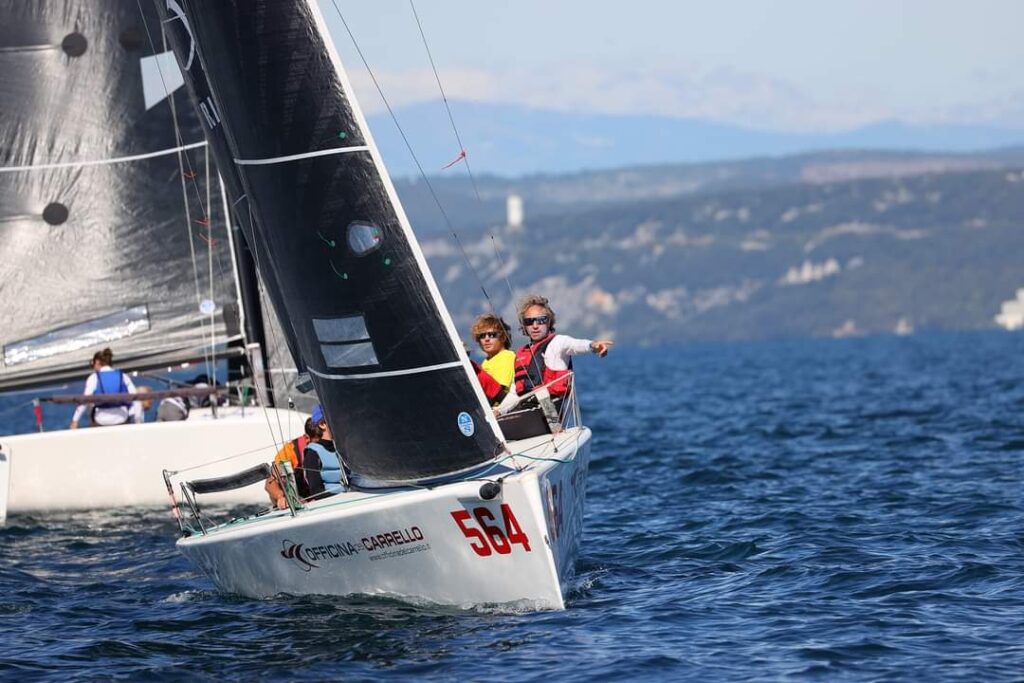
>>Also Read: How to Repair Sails On Your Sailboat
Materials and Cloth Weight
Another important factor to consider when purchasing a new sail is the type of sail material. Woven Dacron was the only viable choice for sail material nearly two decades ago. As a result, the only factor to consider in terms of sail material was the woven Dacron’s grade. Sailors had the option of choosing between a more flexible yet stiffer woven Dacron for cruising and a stiff, highly resinated material for sailing. However, due to technological advancements, things have changed lately. Nowadays, there are several different types of sail materials, each with its own set of benefits and drawbacks.
There are some arguments in favor of more modern cruising sail designs and materials. For the same weight, the better the design and material, the lighter the sail will be. Lighter sails are much easier to navigate than large, bulky sails. In addition, sails made of high-quality fabric that are well-built will invariably last longer than sails that are poorly designed. Bear in mind that the design of the sail would better balance the loads in the sail, making it less likely to deform and break down. Value for money isn’t just about the lowest price; it’s also about a much longer lifespan.
Always make certain to inquire about the form, manufacture, and weight of the cloth that is recommended. For cruising sails, woven polyester is the most common and reliable material, but there are others too such as 3Di, Nylon, Aramid, Ultra PE, etc. There are several major fabric manufacturers from which it’s advisable to get at least one quote about your new sails. Sometimes it might suit purchasing unbranded cloth, but you should be mindful of the price and quality options.
Cloth weight is the final challenge since the various units may be confusing. Meaning that grams per square foot, as well as ounces per square yard, are simple enough. But, in some cases, they refer to as ounces per sailmaker’s yard, which is a piece of cloth 28.5 inches wide by 36 inches long in the US. As a result, you must determine if the number is metric, imperial, or American. And, in some cases, the fabric’s brand name will have a weight that has no bearing on the real cloth weight in either of these schemes. While this is a generalization, the heavier cloth should be stronger and last longer, as well as making the sail heavier!
How to Estimate the Cost of your New Sails
So, what you have to do here is estimate the sail area. In order to do that you have to multiply the hull length (in ft) with the surface area ratio. For instance, a boat with LOA under 28ft with a surface area of 15 will have a total sail area of approximately 420 ft2. Of course, this is a very rough estimate, and you should certainly weigh your sails before making your purchase, but it will suffice for a fast cost estimate.
As aforementioned, the costs of new sails will depend on the type of the sailcloth, the design of the sails as well as on the length of your sailboat . It’s important to remember that these are just estimates, but they should give you a good idea of what to expect when purchasing new sails. Getting a quote from different sailmakers is highly advisable as they will guide you through the process. Let’s now see the estimated costs:
Replacing Mainsails on Bermuda Sloop Rigs
- Sailboats measuring 42 ft to 50 ft cost around $2,500-$4,000
- Boats measuring 36 ft to 42 ft cost around $2,000-$3,000
- Sailboats measuring 32 ft to 36 ft cost around $1,500-$2,500
- Boats measuring 24 ft to 32 ft cost around $1,000-$1,500
- Sailboats measuring 18 ft to 24 ft cost around $650-$1,200
Replacing a Jibs and Genoas
- Sailboats measuring 42 ft to 50 ft cost around $5,500-$9,000
- Boats measuring 36 ft to 42 ft cost around $4,000-$7,000
- Sailboats measuring 32 ft to 36 ft cost around $3,000-$5,000
- Boats measuring 24 ft to 32 ft cost around $2,500-$4,000
- Sailboats measuring 18 ft to 24 ft cost around $1,000-$2,500
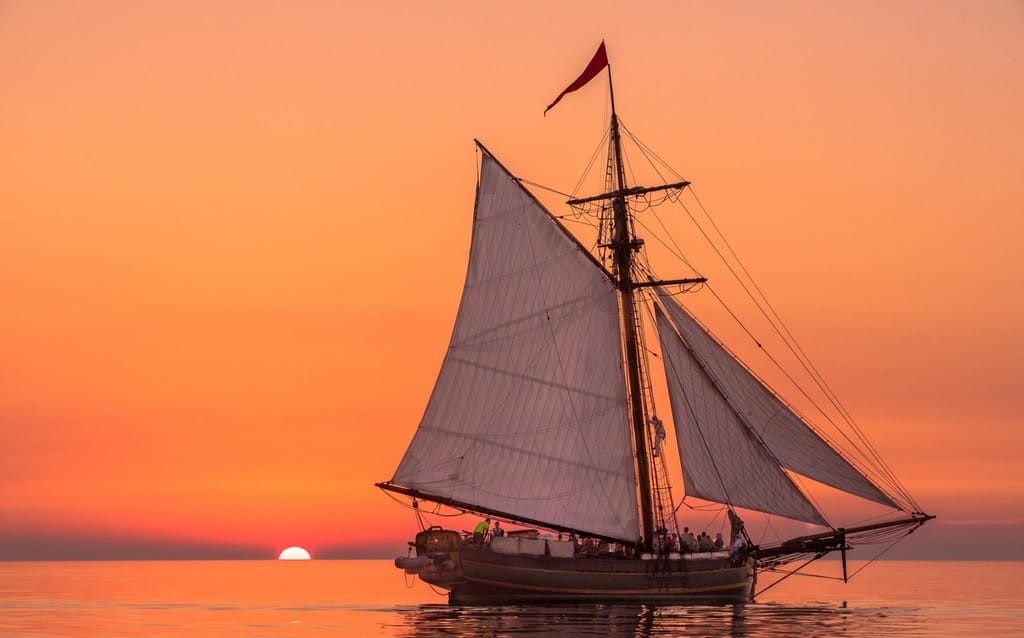
Useful Tips for Buying New Sails
- Focus on the kind of sailing you’d like to do with your new sails. Most of the sailmaking method is a balancing act between opposing forces. In other words, an easy-to-handle sail isn’t always the most durable, the strongest isn’t always the lightest, and the cheapest isn’t always the most cost-effective. For each boat owner and current situation, the right combination of these variables would be different. And, it won’t only depend on the type and size of the boat, but also on your budget. So, consider what kind of sailing do you do and in which locations/waters. Also, the frequency of your sailing as well as your crew members.
- Gather some information about your boat’s measurements. In case it’s a common design, that should suffice for the sailmaker. If not, you’ll need to take a few basic measurements so the sailmaker can provide you with a precise quote. They may give you a form to fill out with the details they need, or they may come out and measure the boat for you.
- Focus on the sail handling system and keep an eye on the detail. Can you upgrade to roller reefing, or will you go for a cruising chute and launch sock? Following those decisions, you’ll need to decide on sail design, construction, and sailcloth. Keep in mind that there are more complex sail panel layouts, such as bi-radial or tri-radial constructions with strong technical advantages regarding efficiency. However, a quick look at the price list reveals that the more complicated the construction, the more costly it is to make.
- Always compare quotes. Contact various sailmakers to learn the differences between the designs so that you can compare all offers correctly. Comparing a tri-radial sail from one sailmaker to a cross-cut design from another, for example, is pointless. This is because the former should always be more costly. So, make sure you’re aware of the sail’s design. If the sailmaker uses a trade name you don’t understand to describe the panel layout, ask them to clarify whether it’s based on a cross-cut, bi-radial, or tri-radial layout.
How Much Do New Sails Cost on a Sailboat? – The Bottom Line
It is a well-known fact that sails do not last indefinitely. Although it’s difficult to predict how long the sails will last, replacing them before they become heavily stretched and out of shape is crucial. It’ll have to happen sooner or later: you’ll have to replace those priceless sails. Everyone knows it’s pricey, but how much is it exactly? A 24′ Bermuda sloop’s jib and mainsail would normally cost $1,000-$2,500 to replace. Sails for mid-sized boats (34′) usually range from $3,000 to $5,000. Also, the cost varies greatly depending on the LOA, the sailcloth and material, as well as the type of the boat. Keep in mind that the cost also rises as the sail area and hull length grow. I hope that this article will help you through the process of buying your new sails. Wish you all safe & pleasant voyages!
Peter is the editor of Better Sailing. He has sailed for countless hours and has maintained his own boats and sailboats for years. After years of trial and error, he decided to start this website to share the knowledge.
Related Posts

The Ultimate Guide to Choosing the Best Fishing Line for Trolling

Lagoon Catamaran Review: Are Lagoon Catamarans Good?

Best Inboard Boat Engine Brands

Are O’Day Sailboats Good? A Closer Look at a Classic Brand
- Buyer's Guide
- Destinations
- Maintenance
- Sailing Info
Hit enter to search or ESC to close.
- New Sailboats
- Sailboats 21-30ft
- Sailboats 31-35ft
- Sailboats 36-40ft
- Sailboats Over 40ft
- Sailboats Under 21feet
- used_sailboats
- Apps and Computer Programs
- Communications
- Fishfinders
- Handheld Electronics
- Plotters MFDS Rradar
- Wind, Speed & Depth Instruments
- Anchoring Mooring
- Running Rigging
- Sails Canvas
- Standing Rigging
- Diesel Engines
- Off Grid Energy
- Cleaning Waxing
- DIY Projects
- Repair, Tools & Materials
- Spare Parts
- Tools & Gadgets
- Cabin Comfort
- Ventilation
- Footwear Apparel
- Foul Weather Gear
- Mailport & PS Advisor
- Inside Practical Sailor Blog
- Activate My Web Access
- Reset Password
- Customer Service

- Free Newsletter

Blue Jacket 40 Used Boat Review

Catalina 270 vs. The Beneteau First 265 Used Boat Match-Up

Ericson 41 Used Boat Review

Mason 33 Used Boat Review

How to Create a Bullet-Proof VHF/SSB Backup

Tips From A First “Sail” on the ICW

Tillerpilot Tips and Safety Cautions

Best Crimpers and Strippers for Fixing Marine Electrical Connectors

Polyester vs. Nylon Rode

Getting the Most Out of Older Sails

How (Not) to Tie Your Boat to a Dock

Stopping Mainsheet Twist

Fuel Lift Pump: Easy DIY Diesel Fuel System Diagnostic and Repair

Ensuring Safe Shorepower

Sinking? Check Your Stuffing Box

What Do You Do With Old Fiberglass Boats?

Boat Repairs for the Technically Illiterate

Boat Maintenance for the Technically Illiterate

Whats the Best Way to Restore Clear Plastic Windows?

Stopping Holding-tank Odors

Giving Bugs the Big Goodbye

Galley Gadgets for the Cruising Sailor

The Rain Catcher’s Guide

Sailing Gear for Kids

What’s the Best Sunscreen?

UV Clothing: Is It Worth the Hype?

Preparing Yourself for Solo Sailing

R. Tucker Thompson Tall Ship Youth Voyage

On Watch: This 60-Year-Old Hinckley Pilot 35 is Also a Working…

On Watch: America’s Cup

On Watch: All Eyes on Europe Sail Racing

Dear Readers
- Sails, Rigging & Deck Gear
Sailmakers’ Advice and Prices
Last month we heard from a group of top sailmakers about the technology and design behind their products, and their loft philosophies. this month they're here to sell sails..
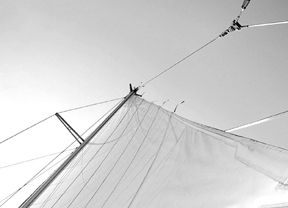
For this second article, we asked all our interview subjects to price out a suit of sails (mainsail and 150-percent furling headsail) for our hypothetical No-Name 35, a 10-year-old, 14,000-pound, single-spreader sloop, which we keep in New England in the summer and take to Florida in the winter. We rarely race the boat, go offshore about four times a year, and often sail in the evenings with the family. We told them that sailshape and performance were important.

We were aware that we were throwing the sailmakers a bit of a curveball with this request. Not all of the requirements dovetailed with the others. Nevertheless, we were interested to see what would happen. This is what each had to say.
North Sails Dan Neri wasn’t convinced our scenario represented a realistic customer and addressed his response in this fashion: “The customer doesn’t sound like a real boat owner, or if he is one, he needs some help figuring out what he wants to do with the boat. If I got this inquiry, I would call the guy and work him through to a more honest assessment of what he needs before offering a price or recommending any products.
“First, nobody cruises from New England to Florida. A 35-foot boat like this would maybe go to Maine once a summer, or to the Elizabeth Islands or Block Island a few times, and it would not use its racing sail for those trips. So it is unrealistic to say you are buying a sail for some racing and mostly cruising. Also, you wouldn’t want a 150% genoa for offshore trips. A cruising sail, or any sail designed for offshore use, should have a relatively high clew. A higher clew allows you to vary the sheet tension without moving the lead. With a low-clewed 150% designed for racing, the lead has to be moved forward and outboard as soon as you ease the sheet, which isn’t practical on a cruising boat. Also, you can’t see anything under it and water can’t get off the foredeck, so the sail is stressed (and stretched) along the foot when the bow drops into waves. When you raise the clew the overlap with the mainsail increases. So you would want to raise the clew and then shorten the LP [See the box on page 7 for explanation] to keep the overlap the same. And if you’re really going offshore with this as the primary headsail, you’d want to shorten the LP some more to get a greater upper wind range. In an ocean cruising environment I’ve found that you’re either happily motorsailing and enjoying the flat conditions, or you are depowering to keep the boat flat. Those glorious 12- to 14-knot days only happen in magazine stories.
“If the headsail is to be a roller-furling sail, the higher clew is again better because it allows the sail to roll up without the foot piling up and it allows you to roller reef the sail and still have the sheet lead to the jib track car. I usually help the customer figure out how much overlap he wants between the mainsail and headsail as step 1. Then we make the clew height so the sail sheets to the back of the genoa track fully unrolled. That gives you the greatest range for roller reefing before the sheet lead runs off the front of the track. Also, if you want to use the sail wing-and-wing for downwind sailing, it should have an LP of about 125-130 percent, based on a J-length pole. You can roller reef a larger sail to work on the pole, but in that case you lose luff length and quality of sail shape.
“If it were my boat, I would buy a fully battened Marathon mainsail with two reefs and five battens and an Antal luff track system. I would add a very simple lazy jack system made out of 3-mm Spectron 12 cord—no blocks or cleats, just the cord permanently tied in place in a fixed location, left up for racing and cruising. And I would add a roller-furling Marathon genoa, about 135 to 140 percent LP, with about a three-foot clew height.
“To make this a more racing-oriented sailplan, the mainsail would be built with two full battens and two shorter, lower battens. It would not be as easy to reef and the sailshape would degrade sooner, but the sail would be a little more adjustable and easier to trim when hard on the wind. The headsail could be made larger on the LP and lower-clewed for better race performance. In that case, you would also want a small racing jib for conditions over about 15 knots.
“Depending on the boat, you could consider a more radical change and try to set the boat up with a larger roached mainsail and a non-overlapping primary jib. That setup has plenty of advantages for easy sail handling, but suffers in the lighter winds.”
Neri supplied quotes for a mainsail of 8-oz. Dacron with two full-length battens and two reefs: $2,105. For the headsail he specified a 140% genoa of 7-oz. Dacron, with UV leech and foot, and a rope-luff reefing pad with reefing patches: $2,852.
Neil Pryde Sails Tim Yourieff recommended his company’s Cruise Plus range of sails. “This construction standard is specifically designed for sails that will see blue-water offshore sailing, which you will encounter between New England and Florida. For the mainsail, I would recommend a full-batten sail, as this tends to greatly reduce sail flogging and therefore increases the sail’s lifespan. For offshore sailing I would recommend three rows of reefs, or two rows and a storm trysail.
“You should definitely cover the sail while it’s not in use, especially in Florida. You may wish to consider our Lazy Bag cover for this.
“For the genoa, In addition to an Acrylic UV suncover, I would strongly suggest fitting the sail with our Multi-Track foam luff system. This option helps to reduce sail draft when the sail is partially furled in order to maintain a reasonable shape when reefed in strong winds.”
Mainsail (Cruise Plus; standard roach—317 sq. ft.) Fabric—8.3-oz. Challenge High Modulus Dacron: $1,951.48. One reef: $146.35. Full battens (four): $194.97. Lazy Bag sail cover (stock color) $611.68. Total mainsail cost: $2,904.
Storm Trysail (67.55 sq. ft.) Fabric—9.0-oz. ounce, orange. Total cost: $685.
Headsail (Cruise Plus, LP 150%, with two- ply head and clew, 545.69 sq. ft.) Fabric—6.9 ounce Contender: $2,622.16. UV Suncover (stock color): $298.02. Multi-Track Foam Luff $195.58. Total headsail cost: $3,115.
Hood Sails Tim Woodhouse and Joe Cooper offered a detailed quote that began with two fabric options for a mainsail: either 7.5-oz. Hood woven Dacron or 6.0-oz. Hood woven Vektron. Woodhouse says: “I would recommend the Vektron for the mainsail for performance, durability, and ease of handling, as well as a so-called softer hand. This is a term textile guys use to describe the softness/firmness of a material.”
Mainsail (includes a club race roach at 303 sq.ft.) Option 1: 7.5-oz. Hood woven Dacron. The sail incorporates four standard E-glass and epoxy RBS battens; batten pockets fabricated in a separate step and completely closed to separate the batten from the body of the sail; two rows of five-step stitching; slug slides or boltrope on the luff and foot as desired; leech line operable at the clew and each reef point; Hood patented press ring in the clew; standard aluminum headboard, telltales, four sail ties, and a bag. Price: $2,337. Other choices for racing and coastal sailing include two reefs, cunningham eye, foot shelf, sail numbers, draft stripes, and insignia for $633.
Option 2: 6.0-oz. woven Vektron (all else the same). Price: $2,420.
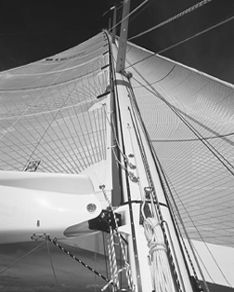
Woodhouse and Cooper say full battens are indeed an option, but they didn’t deem them necessary. The additional cost would be $470. “If the spar has an internal round slug track section, this does not lend itself easily to low-friction operation with the additional compression generated by full battens. You may also then have to look at proprietary batten receptacles and so on, so the price goes up—but we’re not convinced the value goes up with it.”
Headsail “We’re of the opinion that the 150% is too big for this boat and its stated use. We would really recommend the customer consider a sail closer to the 135% size. We also wouldn’t recommend a roller-furling genoa for the stated purpose. It is too light, and though all sorts of characters have sailed all over the place with only one headsail on a furler, we consider that practice extremely poor seamanship. So we’d specify a 135% roller-reefing headsail (484 sq. ft.) designed slightly flatter for greater utility as the sole headsail.”
Fabric: either 8.0-oz. Hood woven Dacron or 6.0-oz. Hood woven Vektron. The sail would have a luff tape, telltales, UV sunshield, foam luff pad, reinforcing at the head and tack to accommodate reefing strains, reef memory marks on the foot, leech, and foot lines, Spectra webbing in head and tack, Hood press ring in the clew, and a bag.
Total headsail cost: for Hood woven Dacron, $3,523. For Hood woven Vektron, $4,104.
Cooper and Woodhouse say that while the price of the Vektron sail might appear high, if one compares this sail to a laminated sail of equivalent service and performance, with a high-modulus fiber as the load-bearing fiber, the Vektron sail will be less expensive and more durable.
Halsey Lidgard Paul van Dyke had several suggestions, including a novel approach to the headsail issue. For a mainsail, he recommended using 8.3-oz.,high-aspect Dacron (“This material is maintenance- free and bulletproof.”) with two reefs, one at 12% percent and the second at 30%. “The second is deeper than usual so the boat will handle well in a gale with the deep reef and a storm jib. Four full battens will dampen flogging and extend the life of the sail.” Price: $2,696.
For a genoa to be used in the lighter winds of summer as well as the occasional race, van Dyke recommended a 150% polyester laminate with a furling cover. “This sail will be lighter weight and higher performance than crosscut Dacron.” Price $3,475.
He also offered this observation: “The boat has quite a large J dimension, so it is difficult to get one headsail to do everything. With that in mind, here’s a further headsail option: An 8.30-oz, crosscut Dacron sail at 125%, with roller-reefing patches and a rope luff. This sail has very little low-end range and probably does not start working well until 12 to 14 knots of true wind. But if you did not want to change headsails on long offshore passages it would be an effective sail. Plus, it can roll down to an 85% in sail area. Price: $2,507.
“Another sail to consider, especially for offshore work, is an upwind staysail set on an inner forestay. This sail is easy to handle because it remains hanked on the stay. It works quite well as a double-head rig configuration for reaching, and can be used alone as a storm jib. We would use 7.3-oz. Dacron. You’ll have to install the the inner forestay. Price: $860.
Doyle Sails Mark Ploch suggested two options for mainsails and headsails. He says the Dacron/Mylar combination mainsail would be great for the more modest budget. The D4 option is “Doyle’s best product, and gives you the best balance of performance and durability.”
Regarding headsails, Ploch offered both the QuickSilver II genoa and a roller-furling sail. He also offered this important caution: “We feel that something in the neighborhood of a 135% headsail is a better sail for the cruiser than a 150%. Most of the time they’re not sailing with a crew stacked on the rail and they’re usually less concerned about boatspeed when there’s under six knots of true wind than they are about heel in 15-plus knots.”
Ploch’s quote includes a foam luff on the headsail, but he says that he tries to talk most of his southern customers out of this option for two reasons. “The foam luff does indeed help flatten the sail as it rolls in, but you will always have a sail that is compromised. When the sail is rolled up it is sitting behind that fat roll, and when it is totally unrolled, the foam luff makes a thick leading edge, which is hard to read. And, in the warmer southern climates, mildew is an issue within the foam.”
Mainsail (both options moderate girth—329 sq. ft.) Option 1: Fabric 7.62-oz. Dacron with four standard battens, two reefs,shape stripe, slides, headboard, and bag. Price: $3,122. Option 2: Fabric D4 Vectran 10 with standard film/taffeta, including four standard battens, two reefs, numbers, headboard, sail slides, cunnigham, and bag. Price: $4,210.
Headsail: QuickSilver II (150%—497 sq. ft.). Fabric is 6-oz. Mylar, and sail includes UV cover and bag. Price: $3,693.Rollerfurling (150%—497 sq. ft.). Fabric is D4 Vectran with standard film/taffeta, sail includes spreader patch, UV cover, and bag. Price: $4,779.
UK Sailmakers For a mainsail, Adam Loory recommends “a full-batten sail made of Dacron. The full battens add durability by preventing flogging, and they reduce noise during hoisting, dousing, and reefing.” He also cautioned that full-length battens are a little difficult to race with because they lock in one shape that most adjustments can’t vary. “It is also more difficult to tell when a full-batten main is luffing.”
Determining the size of the genoa, says Loory, is contingent on where the boat will spend the majority of its sailing time. “In traditionally light-air areas like Long Island Sound and the Chesapeake Bay, you want the biggest sail possible without taking a rating penalty (155% of LP is best). If the boat sails mostly in Buzzard’s Bay or San Francisco Bay, a smaller sail would be appropriate (125-135% percent of LP).”
Regardless of its size, Loory based his quote on a roller-furling sail (in this case 140% LP) and offered quotes for both a Spectra laminate and a Pentex laminate, each reinforced with the patented Tape-Drive construction system. “The biggest difference the customer will notice is that the Spectra laminate is white, while the Pentex laminate will have a gray-green color because of the UV protection in the laminate. The Spectra Tape-Drive sail will last up to eight years with proper care, while the Pentex laminate sail will last half that time.”
Loory said he wouldn’t consider quoting on a Dacron headsail, because the boat would at least occasionally be raced.

Loory also said that due to the stated purpose of the boat, the inventory really needs an additional sail, one he says that is often overlooked. “Any boat going offshore needs a working jib to use in heavy weather. A rollerfurling genoa can handle most sailing conditions and points of sail during coastal sailing, but if you’re offshore and need to go to windward for long distances in a breeze, a rolled-up genoa is not going to cut it. The aerodynamic shape of a rolled up sail is too inefficient. Coastal sailors can deal with the inefficiency since a quiet harbor is usually no more than a few hours away—an extra hour bashing to windward because of poor sailshape is inconvenient, but survivable. If you’re well offshore with the wrong jib it can lead to life-threatening circumstances.”
Mainsail (7.0-oz Dacron, full battens, two reefs, number, draft stripes, sail bag). Price: $3,061.
Headsail: Option 1—Tape-Drive Spectra Passagemaker II Genoa, including foam Luff, UV leech and foot covers, reefing reinforcements, racing numbers, draft stripes, and sail bag. Price: $4,895. Option 2— Tape-Drive Pentex Passagemaker II Genoa, including foam Luff, UV leech and foot covers, reefing reinforcements, racing numbers, draft stripes, and sail bag. Price: $4,420.
Working Jib: 8.3-oz. High Modulus Dacron jib with 95% LP, includes UV leech and foot covers, draft stripes, and sail bag. Price: $2,841.
Quantum Sails Dave Flynn offered two possible constructions for mainsail and headsail—woven polyester, or polyester composite using oriented construction. “Your ultimate choice would be based on the emphasis of sailshape versus budget. I would probably steer you toward a woven polyester mainsail, but a polyester composite headsail,” he explained. “I would also recommend that you think hard about making the headsail smaller than a 150%, particularly if this is to be the all-purpose roller-furling sail for offshore use.” (The quote below is nonetheless based on a 150-percent LP headsail.)
Flynn also mentioned that Quantum’s website allows you to look at pricing, and “play around with different-size sails, different materials, batten configurations, numbers of reefs, etc. Education on the critical issues —like whether you should use woven or composite construction—is also available online.”
Mainsail: Option 1—(317.28 sq. ft.) 7.62-oz. Challenge HA woven polyester, including luff and foot hardware, poltruded fiberglass battens, leech cord with cleat, telltales, sail ties, and sail bag. Base Sail Cost: $2,203. Options: Reefs (2); $132; Tapered battens; $47.Total Mainsail cost: Price: $2,382. Option 2—(317 sq. ft.) Tri-radial construction with Dimension’s CX7T, including hand-sewn luff and foot hardware, poltruded battens, leech cord with cleat, telltales, sail ties, and sail bag. Base Sail Cost: $2,748. Options: Reefs (2); $164; Tapered battens; $47. Price: $2,960.
Headsail: Option 1—RF genoa (450.64 sq. ft.). using 6.62-oz. Challenge HA woven polyester, including luff attachment hardware, leech cord with cleat, telltales, and sail bag. Base Sail Cost: $1,786. Options: UV acrylic cover; $377. Foam luff; $197. Price: $2,360. Option 2—RF genoa (450.64 sq. ft.). Tri-radial construction using Dimension’s CX6T, including luff attachment hardware, leech cord and cleat, telltales, and sail bag. Base Sail Cost: $2,866. Options: UV acrylic cover; $377.Foam luff; $197. Price: $3,439.
Conclusions New sails are a huge expense, but they’re also a big part of the game—unless you’re basically using your boat as a motorsailer (which we see more and more often on days with good breezes). You don’t have to be a racer to care strongly about the shape and set of your sails. Remember what one sailmaker said last month: Using old, blown-out sails is like driving on bald tires. They might get the basic job done, but at the cost of efficiency, enjoyment, and even safety.
The key to satisfaction is customer service, as all the sailmakers acknowledged last month. But there’s a disconnect here, we think, as far as cruising sailors are concerned. While big-boat racers have long been used to taking their sailmaker for a ride with a new sail (sometimes several rides, until it’s made right), cruising sailors, maybe because they’re ordering sails from afar, or buying “stock,” or simply don’t know when a sail is cut right or not, just don’t expect that kind of treatment. But they should. We met a cruising man this summer who was worried about where to put leads for his new working jib, but didn’t want to “bother” his sailmaker. This is silly—sailmakers expect you to bother them. It’s their lot in life. In our view, it’s more important for a sailmaker to be willing to work with you and make sure your sails are a good fit, and re-cut them if necessary, than to make them for a low price.
Customer service varies from loft to loft, not only among small outfits, but among the big sailmaker groups, and from boat style to boat style. The owner of a Cal 2-29 said in our survey, “I have found small, independent sailmakers to be a little less high-tech, but very capable and customer focused.” We don’t disagree, but we also know that local representatives of the big chains are sometimes more expert and efficient at making certain sails for certain boats. So there are two questions to ask of any prospective sailmaker: 1. Have you made sails for my kind of boat before? 2. Will you go out with me?
Also With This Article Click here to view “Sailplan Measurements.” Click here to view “Sails & Sailmakers: Reader Survey Results.”
RELATED ARTICLES MORE FROM AUTHOR
Leave a reply cancel reply.
Log in to leave a comment
Latest Videos

Cabo Rico 34 Boat Review

Super Shallow Draft Sailboat: The Leeboard Sharpie


Hans Christian 41T – Boat Review

Seven dead after superyacht sinks off Sicily. Was the crew at...
Latest sailboat review.

- Privacy Policy
- Do Not Sell My Personal Information
- Online Account Activation
- Privacy Manager

How Much Does A New Genoa Cost?
- October 6, 2022
When the time comes for a fresh sail for your boat, you need to know how much you’ll pay. It can be tough to predict how much a new genoa sail is, especially given the various features and customization options available to you on the modern market.
Factors That Affect New Genoa Cost
Genoa sails are large jibs or staysails that usually extend beyond a boat’s mast. In some cases, they will overlap a mainsail if viewed from the side. Regardless, genoa sails have large surface areas, so they can majorly increase the speed of watercraft, particularly in light to moderate winds.
Given their importance, it’s no surprise that new genoas can vary heavily in cost. For example, a new genoa sail for a boat measuring 42 feet to 50 feet may cost between $5000 and $9000.
Let’s get more specific since certain attributes may affect the cost of a new genoa sail.
Sailboat Size
As touched on earlier, your sailboat’s size will impact the cost of a new genoa sail. That’s because larger boats need larger genoa sails if they are to sail properly and benefit from the genoa rig. If you have a smaller-than-average sailboat, you can expect your genoa sail to cost less than a comparatively large one.
Material Used
But the materials used may also impact genoa sail prices. For example, the popular sail manufacturer North Sails produces new genoas in three different materials:
- Dacron , which is a cost-effective yet not very durable material. Dacron genoa sails could be beneficial if you want to save money or if you don’t plan to use your genoa very often. If you expose it to too much wear and tear, you’ll find that it becomes baggy and performs less effectively over time
- North Panel Laminate , which is a specialized laminate sail material intended for increased durability and longevity. Laminate materials may be bolstered by compounds such as carbon. Regardless, these are great choices if you have a little extra money to spend and want your genoa sail to last for as long as possible
- 3Di , a special North Sails material that’s made of woven filaments. Each genoa sail is produced over a 3-D mold to ensure maximum durability and performance over the years. This is the most expensive choice, but it may be worthwhile in the long run
Type of Sail
Your new genoa sail’s price can further be affected by its type. North Sails and similar manufacturers offer many different cruising headsails. For example, you can choose a furling roller genoa, which furls up for easy storage, protection from the elements, and increased longevity if you don’t need the sail deployed at any one time.
Inclusions or Optional Features
More than many other factors, the inclusions or optional features you choose with your genoa sail will impact the final asking price you can expect.
- Depending on the manufacturer, you may be able to select add-ons like:
- A stainless steel clew ring
- A heavyweight luff tape so you can easily furl the sail when needed
- A drawstring sail bag for waterproof storage
- A foot cover and UV leech
- Extended tack and head patches
- A radar patch for easier detection
- Webbing on the head and tack
None of these features are necessary for smooth genoa sail operation, but they can make your experience better or act as convenient additions to your sailing equipment. Consider whether you’ll use these optional inclusions and features carefully before adding them to your order, as they can significantly impact the total price.
Average Genoa Sail Price
Generally, you can expect to pay between $3000 and $12,000 for a quality genoa sail, depending on your boat’s size and the factors mentioned above.
Where to Buy a New Genoa?
Luckily, you can buy a new genoa on SailTrader right now. North Sails’ new cruising headsail is available as a genoa, and it’s available in the materials and types mentioned above. This makes it quick and easy for you to get a quote for a new genoa sail for your watercraft whenever you need it.
Even better, you can use SailTrader’s marketplace to find many more sails, such as mainsails, for your boat. Why wait? Check out SailTrader today!
The Sailor’s Marketplace for Sailboats and Sails.
Sell Your Sailboat
Sailboats for sale.
- New Sailboats
- Used Sailboats
- Cruising Sailboats
- Racing Sailboats
Sell Your Sails
Sails for sail, sail manufacturers.
- North Sails
- Quantum Sails
- Doyle Sails
- UK Sailmakers
Sailing Reviews
- Sailing Line
- Safety Equipment
- Sailing Accesories
As an Amazon Associate SailTrader earns from qualifying purchases.
This website uses cookies to ensure you get the best experience possible.
These cost calculators give average prices for basic sails and may not reflect current pricing. For a firm quote on a customized sail with exactly the features you want, call the loft at 508-563-3080.Mainsail price calculator, jib/genoa price calculator, asymmetrical spinnaker price calculator. Go back to the New Sails page. Go back to the Squeteague Sailmakers home page. US Mail: P.O. Box 517, Cataumet, MA 02534
 Home » Blog » Gear » Buying used sails (a complete guide to buying second-hand sails) Buying used sails (a complete guide to buying second-hand sails)By Author Fiona McGlynn Posted on Last updated: August 18, 2023 If you’re looking into buying a set of used sails, you’ve probably realized just how expensive brand-new sails can be. Fortunately, you can buy used sails (that are still in good condition) for very affordable prices. Potentially saving yourself thousands of dollars. Finding a good deal on a used sail that fits your boat is just a matter of knowing how and where to look. In this guide we’ll cover:
Cost-saving tip: Did you know you can also save money by buying used boat parts ? 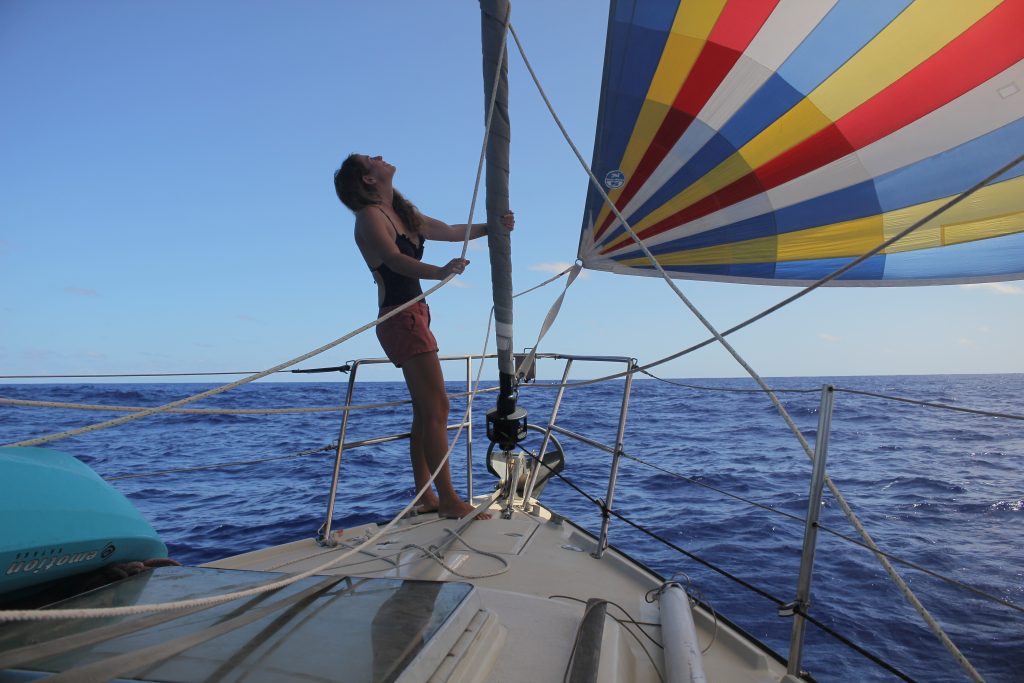 How much do used sails cost?While pricing varies by size, material, and condition, you can expect to spend a fraction of the price that you would on a set of new custom sails. As an example, when we were preparing our Dufour 35 for bluewater cruising, we spent $5,000 on a brand-new main and genoa (a hefty chunk out of our cruising budget). I recently priced out a similar set of used sails in good condition and came to a total of $1,200. That’s a 76% savings! Do used sails save you money over the long run?You might be wondering if a used sailboat sail will save you money over the long run. After all, used sails are “used” and presumably don’t have as much life left in them. As sails age, they lose both their shape and structural integrity. They gradually stretch which makes them less efficient airfoils and impacts performance. They also become more prone to tearing as the material degrades. Imagine paying $1,200 for used sails that only last one season. You would have been much better off spending $5,000 on new sails that last 10 or more seasons (i.e., $500 per season). So, when you’re shopping for a used sailboat sail, it’s important to look closely at how the used sails are rated. Most sail brokers have ranking systems that describe their sails as being anywhere from “Like new” to “Good” to “Useable”. These rankings can differ from broker to broker. So, to find out if my $1,200 sail set ranked as “good” is still a good deal, let’s take a closer look. We’ll use Atlantic Sail Trader’s used sail ranking system as an example:
If my sails cost $5,000 new (with 100% life left), you’d think that a “good” set with 75% life left should cost should cost $3,750. Instead, I found them for $1,200. So, in reality, you’re saving more like 68%, which still seems like a good deal. 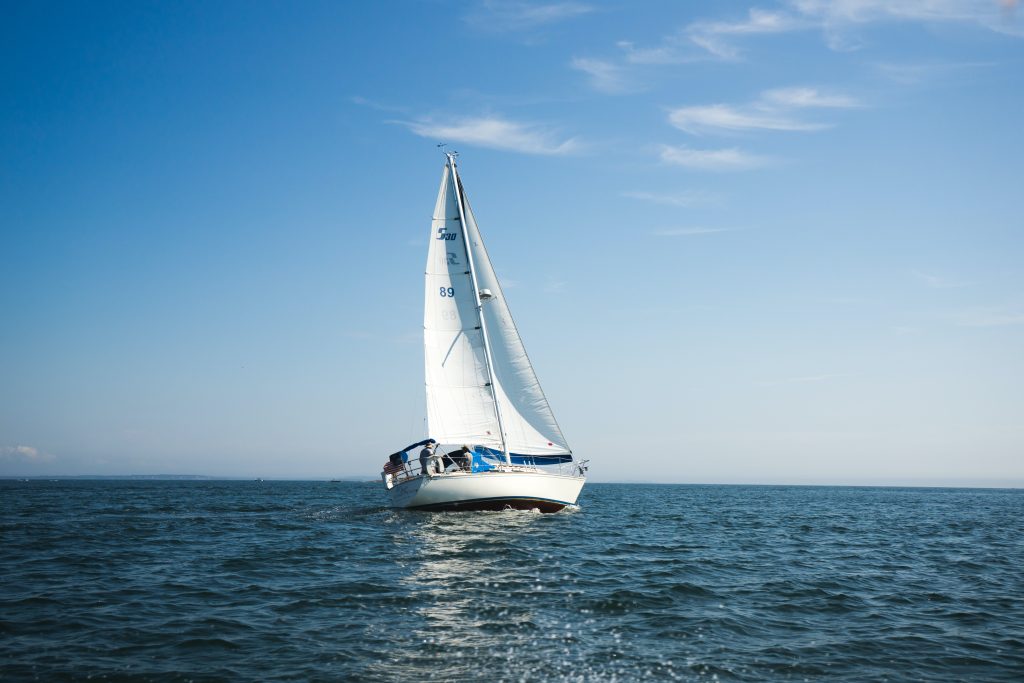 What about performance?It’s worth pointing out, that sails have two “lives”: An ultimate life: how long it will stay in one piece. Never use a sail for so long that it risks breaking while underway. A performance life: how long it will retain an aerodynamic shape, allowing you to point higher and sail faster. A sail’s performance life is generally shorter than its ultimate life. How much shorter, depends on the type of sailcloth. According to North Sails , woven polyester sailcloth has a performance life that is less than half of its ultimate life. For cruising laminates these figures look to be more in the 70-75% range. These numbers might sound dismaying, but it’s worth investigating what “performance” means and how much it matters to you. In our experience, new sails were nice to have but not life-changing. They did noticeably improve our boat’s sailing performance, allowing us to point a bit higher and eke out a fraction of a knot more boat speed. Whether or not this matters to you will depend on the type of sailing you’re doing. If you’re a competitive racer, new sails might be quite critical, giving you that winning edge. If you’re weekend cruising, they probably won’t make much of a difference, maybe getting you to your destination 10-15 minutes earlier on a half-day sail. If you’re planning on doing bluewater cruising you may want to buy new, as we did, because we didn’t want to be faced with replacing our sails halfway through our trip. Or budget may be the determining factor, and a 50-80% savings is nothing to sneeze at. 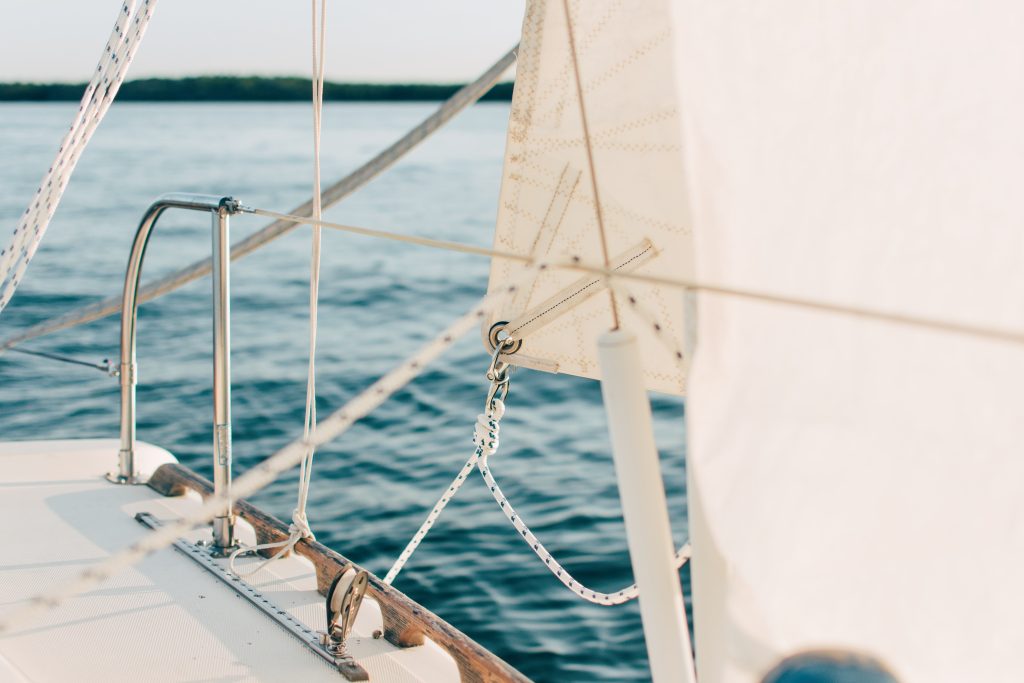 What about all those ugly stains?Don’t let a few rust and mildew stains put you off buying a used sail. These stains are pretty common and aren’t necessarily indicative of a problem (though it might suggest the last owner didn’t clean their sails very often!). With a few sail cleaning tricks you can greatly reduce the appearance of stains and brighten the overall appearance of your sail. How to search for used sailboat sailsBefore you start your search, you’ll want to have a clear idea of what you’re looking for. You’ll need to know:
Used sail typesYou’ll find a wide variety of sail types on the second-hand market. Here are some commonly available used sails:
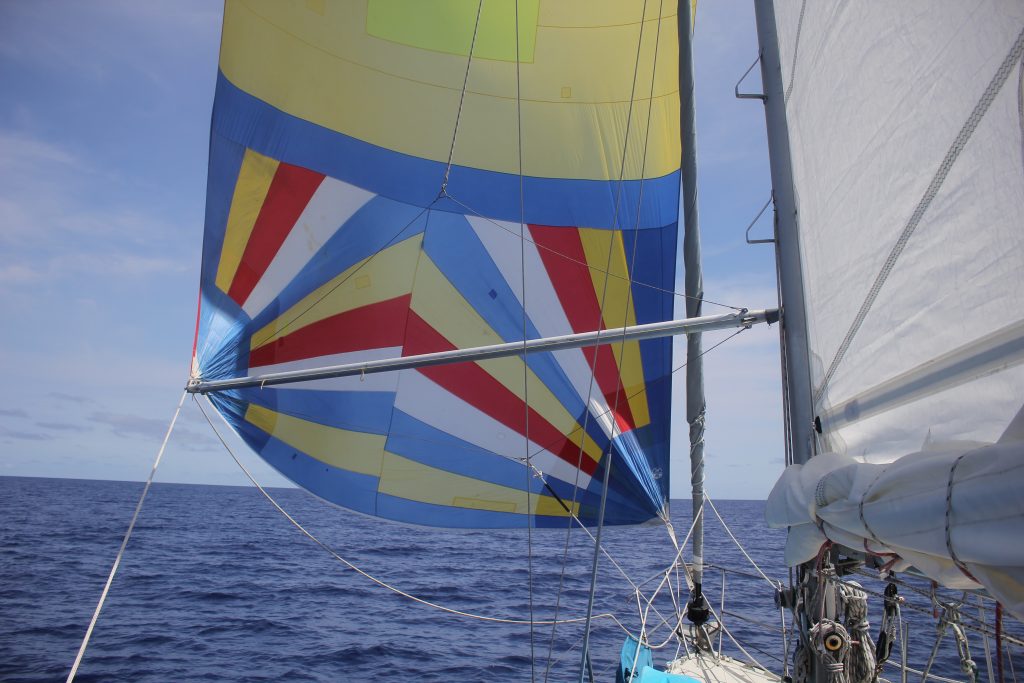 Used sail featuresThere are many options and features that affect a sail’s performance and longevity. While you may not get everything you want in a used sail, understanding sail characteristics will help you narrow down your search. Mainsail battens are flexible inserts, often made from fiberglass or vinyl, that help support the roach and improve the airfoil shape. A standard mainsail has short battens but you can also get full battens which help reduce the flogging of a luffing sail and make it easier to stack the sail on the boom. Roller furling headsails are common on the water today and you’ll find plenty of used options. Furling mainsails are also available second-hand if you happen to have a boom or mast that accepts a furling sail. 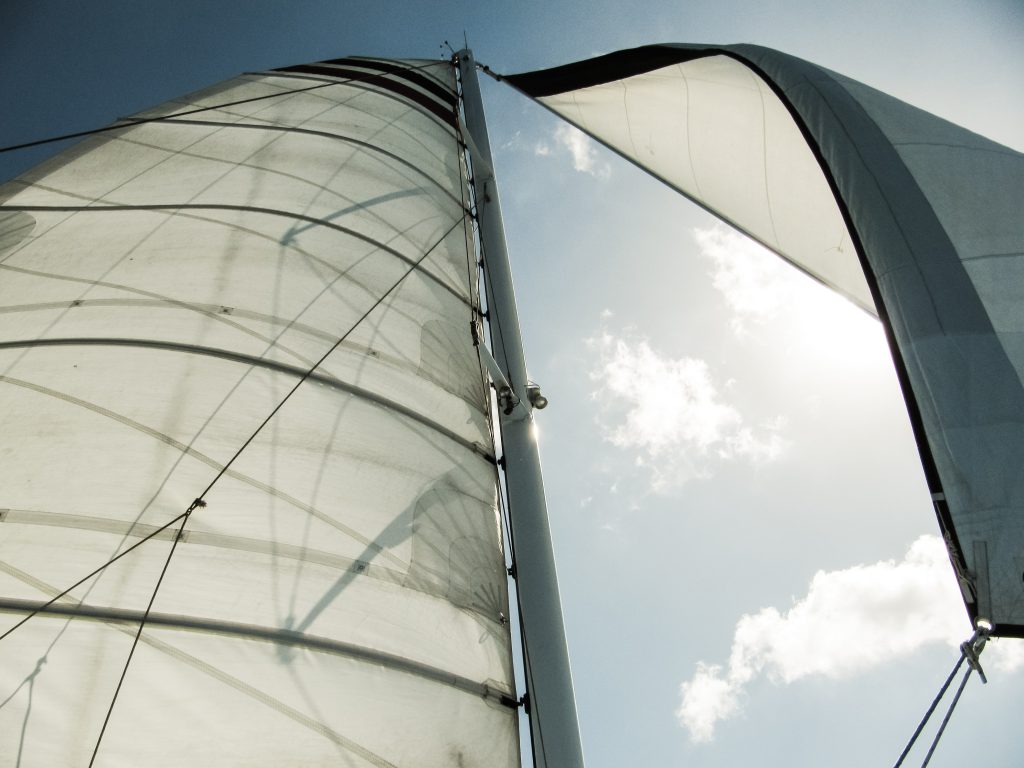 Reef points allow you to reduce the size of your mainsail when the wind speed picks up. The more reef points you have, the more flexibility you have to adjust your sails to match the wind conditions. Do you want a used mainsail with a single reef, deep reef, or even two or three reefs? UV damages sailcloth, ultimately shortening the life of your sail. Sail covers are built-in and keep the headsail protected when it’s fully furled. Some used sails come with a custom sail bag for storing your sail when it’s not in use. Leech Lines and foot linesLeech lines run along the leech, from the head of the sail to just above the clew. Foot lines run from the tack to the clew along the foot of the sail. Both lines are used to tension and reduce any fluttering in the edges of the sail. Pro tip: Can’t find all the features you’re looking for? You can pay your local sail loft to make alterations or even do it yourself with a basic sail repair kit . 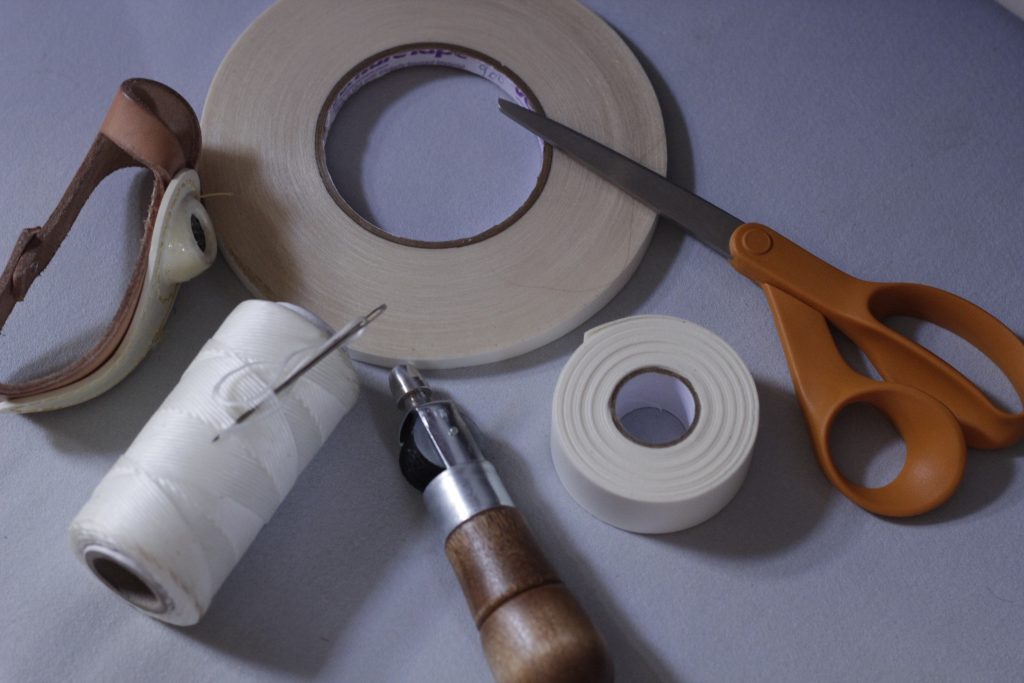 Used sail materialsWoven polyester. Most of the used sail market consists of woven polyester, a material known for being affordable, durable, and reliable. It’s often called dacron, in reference to the DuPont trade name. Charter companies expect to change out their dacron sails every two to three years or 1500 to 2500 hours . For the average weekend cruiser, this might amount to 10 years of serviceable life. 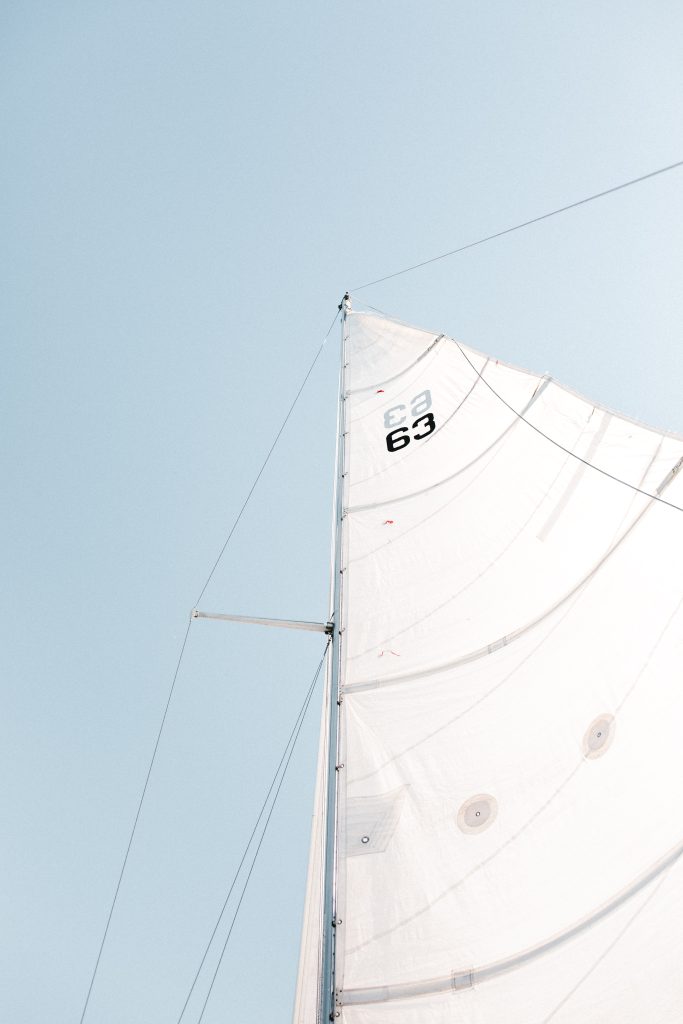 Laminated sailsLaminated sails are a step up from dacron. They tend to be lighter and hold their shape longer, though generally aren’t as long-lived ( expect 5-7 years ). Laminated sails are made by combining a load-carrying fiber (e.g., polyester, aramid, Spectra/Dyneema, carbon, or a mix) with a laminate (e.g., Mylar film). You may find a few used laminated sails on the second-hand market place but they’re not as common as dacron. They also tend to be pricier. Nylon is a lightweight and low-cost fabric commonly used in spinnakers. Cruising World has a good overview of sail materials if you’re looking to get into the nitty gritty. Material weightWhen choosing a sail, you’ll have to choose a material weight that’s appropriate for your boat’s size and displacement. For instance, a 20-foot boat might use a 5 oz Dacron mainsail, but a 50-foot boat might use a 10 oz Dacron mainsail. From there, you’ll be looking to balance how easily the sail fills in light winds with the sail’s longevity. Generally speaking, heavy sails will last longer while lighter sails are better for sailing in light air. 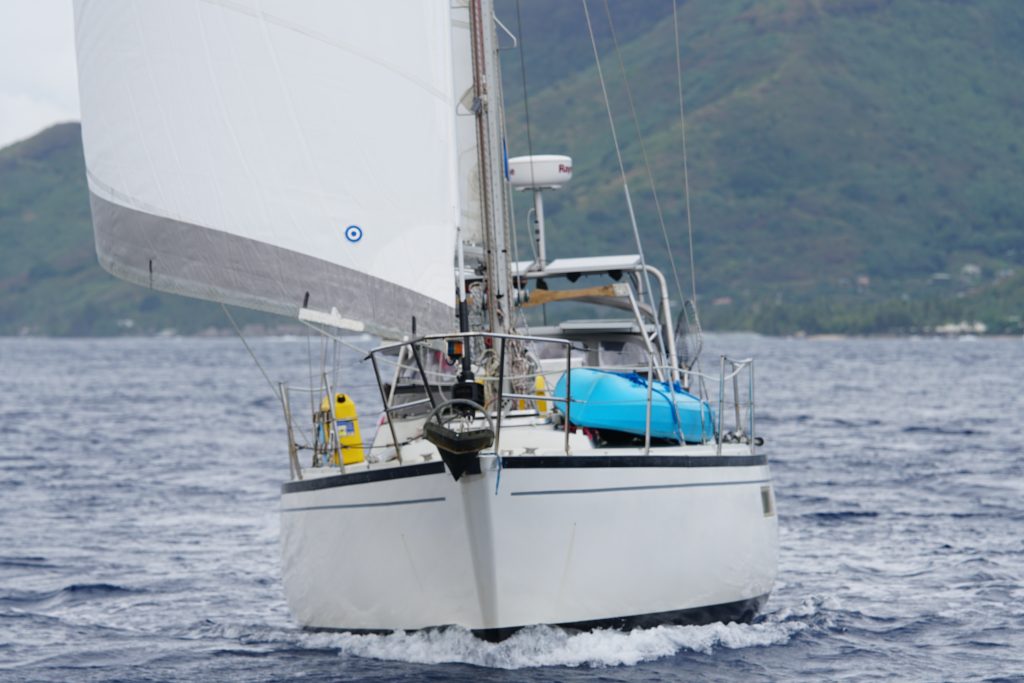 Take your sail measurementsThe most important step in used sale shopping is getting accurate measurements. At some point, you’ll need to hoist your sails and take detailed measurements of your rig. You can work with your sail broker or use this downloadable sail measuring guide from Sailrite. However, to start your search, you only need to know four basic rig and sail dimensions. Quick search tipIf you’re just looking to get a rough idea of used sail pricing and availability, you can look up rig measurements (I, J, P, E) for your boat on SailboatData.com and input these into the used sail websites listed at the bottom of this post. Remember, it’s CRITICAL that you take hoisted measurements before ordering a used sail as your boat’s rig measurements may differ from those on SailboatData.com. For example, your boat may have a tall rig, or a previous owner may have made alterations to the spars, stays, or added a roller furler. All of these may impact your rig measurements. 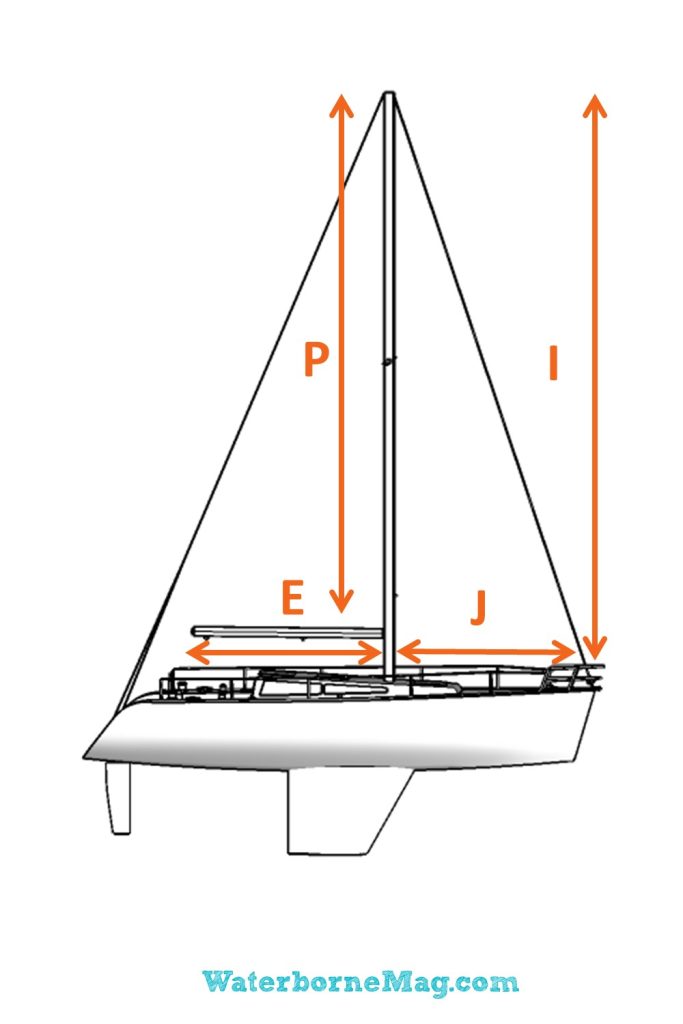 Mainsail measurementsLuff length (p). Hook the end of your tape measure onto your main halyard (alongside your old sail) and hoist it right up to the top of the mast. Then measure to the top of the boom to get your maximum luff length. Leech lengthWhile you’ve got your tape measure hoisted, take the other end and measure to the end of the boom where you want your clew ring will be. Lastly, measure from where the tack of the sail attaches at the front of the boom back to the farthest back point where you could attach the clew. This will be your maximum foot dimension. Luff attachmentDepending on how your luff attaches to the mast (e.g., slides, slugs, rope luff) you’ll need to know the width of your existing track or slot. However, it’s fairly easy to add or change out slugs and slides if you can’t find a used sail that will fit your mast track. Headsail measurementsLuff length. Hoist the end of your tape measure up to the top of the mast with your jib halyard. Measure down the forestay to the deck. If you have a roller furling headsail, you’ll attach the tape measure to the top spindle and hoist it up. Measure down to the top of the furling drum. I dimensionWith the tape hoisted up the mast, measure straight down to the deck. J dimensionLastly, measure from where the forestay connects to the bow back to the base of the mast. If you have a roller furling system, you’ll also need to measure the diameter of the luff tape, the small cord on the luff of the sail that serves as the attachment point to the roller furling system. 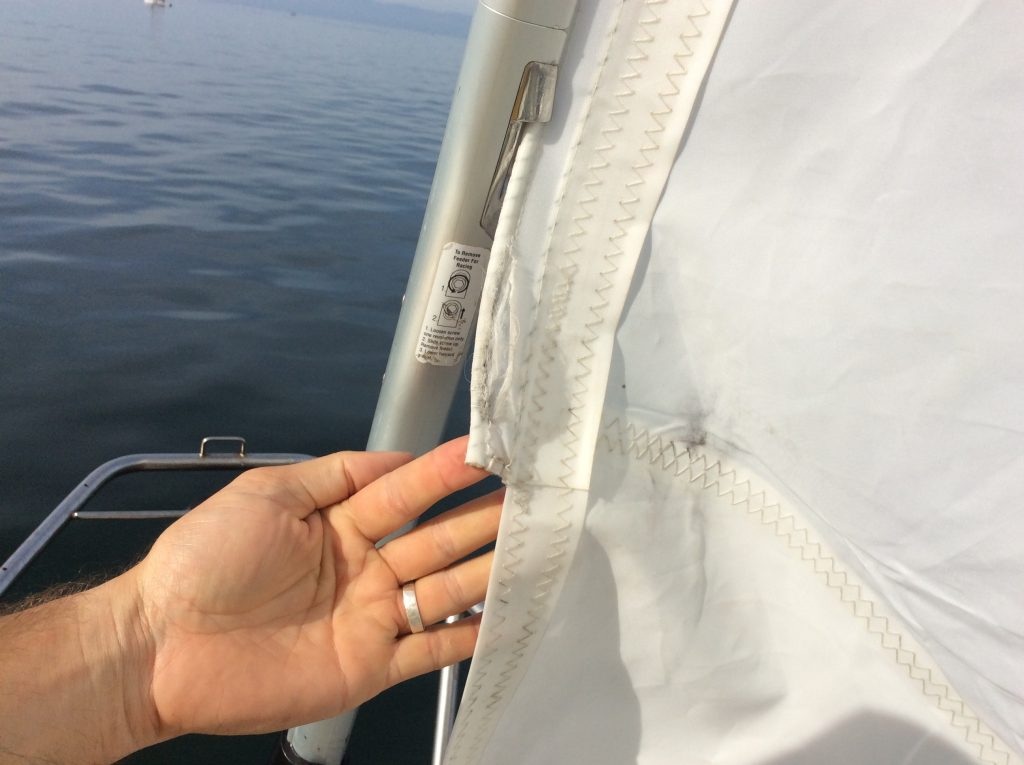 Luff Perpendicular (LP%)Have you ever heard someone mention a percentage when talking about a headsail (e.g., 135% or 150%)? They’re referring to the sails LP% or Luff Perpendicular percentage , which describes a headsail’s size/overlap relative to a boat’s J dimension. The LP is the shortest perpendicular line from the clew to the luff. The LP% is the LP divided by the J dimension (measurement along the deck from forestay to mast) LP / J * 100 Deciding what LP% you want, will depend on a few factors including:
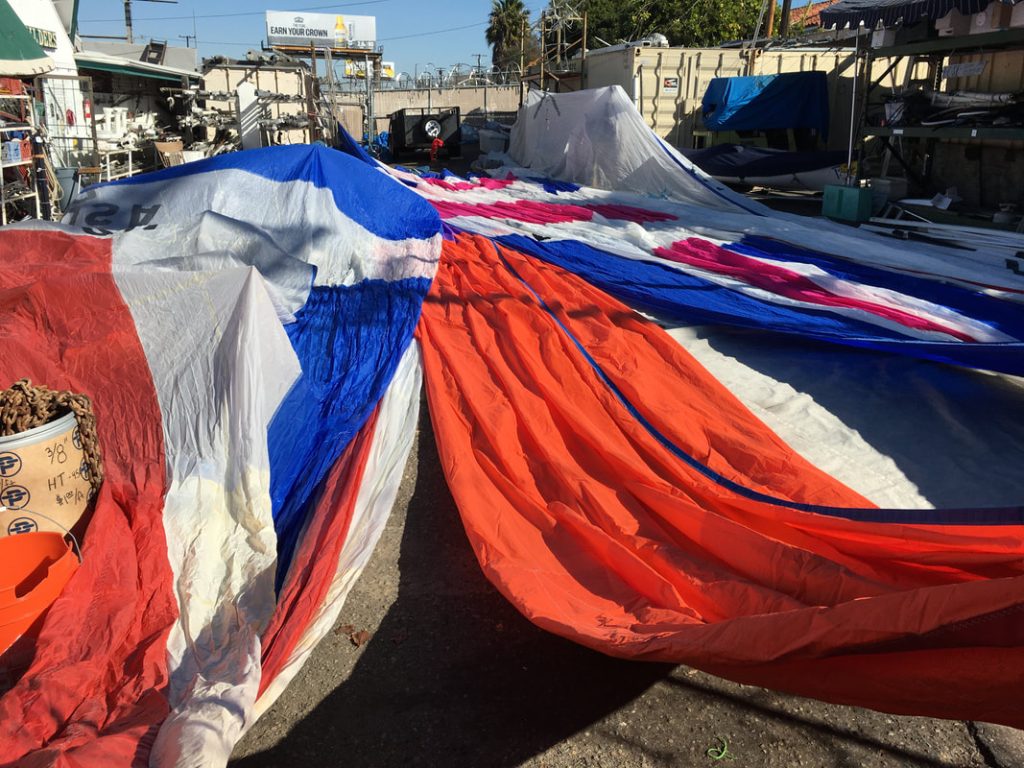 Fine-tuningRemember that these measurements are just a starting point to help you narrow down your search. There may be other factors to consider:
Once you’ve narrowed down your search to a few sails, contact a sail broker (see below) and they can give you tailored advice for your particular situation. 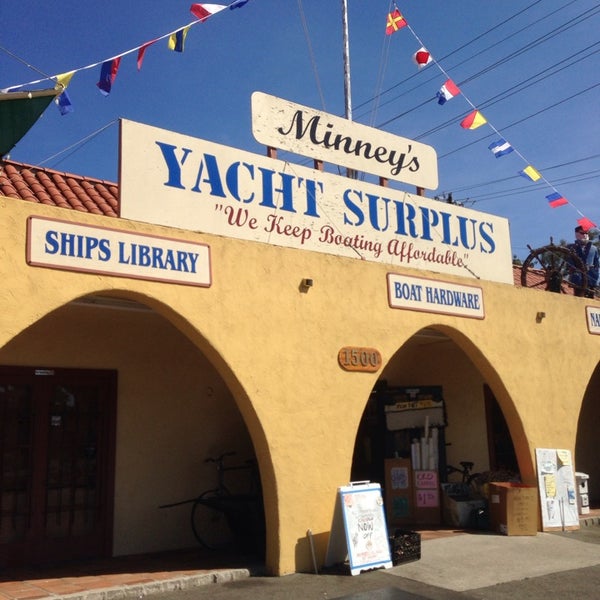 Where to buy second hand sailsOnline marketplaces. eBay has a wide assortment of used boat sails. You may also have luck finding a good deal on a used sail on Craigslist or Kijiji. One downside to these marketplaces is that you’re buying sails from the original owner, who may not provide precise measurements and likely won’t be an expert in sails. Used sail brokersSeveral stores specialize in selling used sails. They all vary in how they present their inventory. Some have retail locations, though you’ll find far more selection if you’re willing to shop online. Some used sail websites offer better or more services than others.
Minney’s Yacht Surplus in Costa Mesa, California is a must-visit for cruisers sailing down the coast. Not only do they have the largest new and used sail inventory on the West Coast, but they also offer a huge assortment of used boat parts. Their sail list is available on their website. All sails are priced under $2,000 and sold on approval. So, if it’s shipped to you and you decide it isn’t suitable, you can return it within five days. 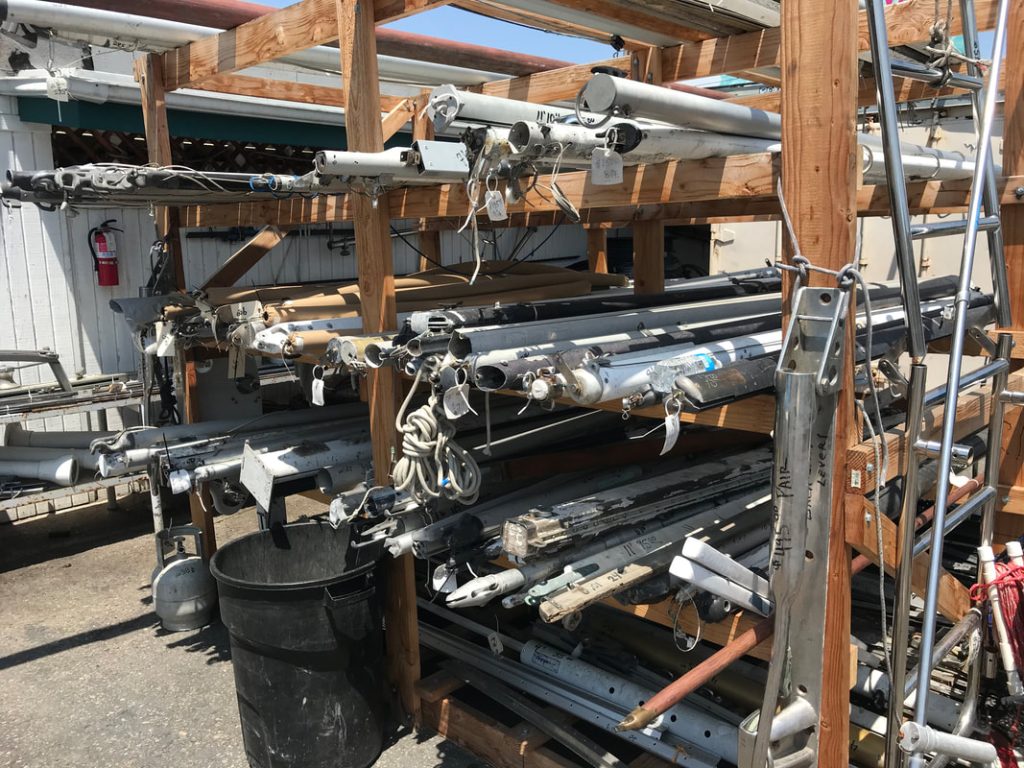 Second Wind Sails started out serving the sailing community in Ft. Lauderdale, Florida, and has since expanded internationally. You can search their site by sail type, luff dimension, and foot dimensions. If they don’t currently have a sail that fits your needs, you can sign up to be notified by email when future sails match your search. For every sail they sell, they offer a 100% satisfaction guarantee. Atlantic Sail Traders has been supplying sailors with new and used sails since 1985. They have thousands of new and used sails for sale including mains, jibs, genoas, spinnakers, mizzens, drifters, and storm sails. They’ll even take your old sails in on a trade towards a new or used sail or sell them outright for a 50% commission. Bacon Sails has an extensive database of used sails and have been sail brokers since 1959. It’s very convenient to search their database because you only need to specify your boat’s make, model, and desired sail type. Though you’ll want to confirm your rig specs before finalizing your order. Sail Exchange is based in Australia but ships worldwide for a flat rate of $99. They have a wide selection of used sails for sale and, unlike many other websites, each listing includes a photo of the sail in question. They also offer a 30-day 100% money-back guarantee. If you want to trade in your old sails, they’ll give you 15% off a new sail (of a similar size). They also sell used spars, sail bags, and other rigging. Masthead Sailing Gear has a page where you can search for used sails by luff dimension. Fiona McGlynn is an award-winning boating writer who created Waterborne as a place to learn about living aboard and traveling the world by sailboat. She has written for boating magazines including BoatUS, SAIL, Cruising World, and Good Old Boat. She’s also a contributing editor at Good Old Boat and BoatUS Magazine. In 2017, Fiona and her husband completed a 3-year, 13,000-mile voyage from Vancouver to Mexico to Australia on their 35-foot sailboat. Douglas McQuilken Sunday 1st of May 2022 Another comprehensive, informative article. When replacing your sails keep the older out of the landfill. Go green and trade them in at https://seabags.com/ . (I am not affiliated) Terms and Conditions - Privacy Policy  NORDIC TUGS NORTHERN MARINE BULLFROG BOATS MY YACHT WORTH?
FEATURED LISTINGS YACHTS BY BUILDER YACHTS BY LOCATION YACHTS BY TYPE WHY LIST WITH US
FT LAUDERDALE MARINA DEL REY SAN FRANCISCO BAY VICTORIA B.C.
FLOTILLA EVENTS SEATTLE SAILING ACADEMY
How Much Does An Average Sailboat Cost? If you have ever spent a glorious afternoon on the water on a sailboat, you know what a thrill it is. Sailing represents freedom, harnessing the wind to drive you forward. It is a quiet time on the water and developing the skills to sail well can be addicting. It doesn’t matter if you want to simply go out for a few hours, enjoy an occasional overnight or weekend cruise, join the racing crowd and be in the frenetic chaos at the starting line, or dream of tropical sunsets in paradise far over the horizon. Sailing has great appeal to those romantic souls who discover its pleasures. And sailing can be a lifelong passion. The average cost of a sailboat for sale will vary all over the board, given the many sizes, complexities, and types of sailboats out there. New or used, they can range from small, open daysailers to large catamarans that have multiple staterooms and accommodations for the entire family. Modern speedy monohulls will provide the adrenaline rush for those athletic enough to push them to their limits, while heavier, slower sailboats provide a comfortable platform to sail safely around the world, or wherever your dreams take you. A 22-foot sailboat may be close to $30,000 brand new, yet an older model of the same boat built in the late 1970s might be purchased for $5,500 or less. A shiny new 48-foot catamaran will cost you well over $1,000,000, while a similar boat built in 2008 may be purchased for $425,000, and be better equipped. This new-versus-used situation is going to be true for all sailboats, no matter if they are monohull, catamaran, motorsailer, daysailer, or racing machine. Is it best to always buy a brand-new boat? That depends. The key is to understand that there will be additional costs that may not be obvious. (Seen below: The Hanse 315 is an approximately 30-foot sailboat that costs between $100,000 and $150,000 when purchased new.)  The docks at all major boat shows showcase the diverse range of sailboats to satisfy everyone’s ideas, and it is easy to fall in love with one boat after another. Sailboats are funny like that, so similar, yet so different. How to choose the right one often comes down to what one can afford. That sail away special during the show may be enough to pull out your checkbook, but there is more to it than just the sale price. There is the obvious need to keep it somewhere, insure it, and maintain it. Relevant: Frequently Asked Questions About Owning A Sailboat One must have realistic ideas of what they are looking for, and an experienced yacht broker will be of great value to help determine that. A broker is key to weave the person’s sailing experience with the kind of sailing they hope to do, while working within their budget. But once the basic plan is in place, it becomes a fun adventure to look and learn from as many boats as possible. Some will appeal straightaway, for any number of reasons, while others may be intimidating in terms of size, complexity, and finishes that demand expensive maintenance. Boats with highly varnished brightwork will be much more labor intensive than white fiberglass, minimal interior appointments, and just basic systems. Low maintenance boats are literally a wash and wear proposition that live just fine during the season on a mooring. For instance, most new production boats are built to the level of completeness necessary to satisfy most buyers. It is sufficient for how most people will use it. That is smart and intentional. It makes no sense to fully outfit a sailboat to the level where it can safely cross oceans, because the builders already know few owners have that desire and doing so drives up the costs significantly. So, the manufacturers complete the boats to around 80 percent of what would be necessary for a passagemaker ready to conquer the world. If you have long-distance cruising plans, keep that in mind. (Seen below: This is a very interesting video from a couple that lives on their sailboat. It gives you an idea of what you 'could' equipped with.) What new boat buyers soon learn is the extent of associated costs that necessarily increase as the boats get bigger, more complex, with more systems for comfort and ease of sail handling…all intended to provide a higher quality living aboard experience. A partial list of such items may include : • Diesel engine propulsion system, including transmission, shaft and seal, and propeller • Additional standing and running rigging, such as whisker pole and inner forestay • A sail inventory beyond regular sails, such as spinnakers, Code Zero, and special purpose sails • Some form of renewable anti-fouling protection for hull and propeller • Batteries, which often must be replaced every six years or so • Ground tackle, which may include electric windlass, chain/rope rode and heavier anchor(s) • Navigation electronics and autopilot • Safety gear, such as PFDs, life raft, EPIRB, flares, harnesses • Dinghy and perhaps a gas or electric outboard • Comfort appliances, such as refrigeration/freezer, air conditioning • Generator • Bow thruster • Exterior canvas for bimini and covers for sun and weather protection • Additional fenders, dock lines, shorepower cords One will also have to put together tool bags to maintain all the above, and there needs to be storage for these and other special tools that find their way aboard. In a harsh saltwater environment, tools typically must be replaced every so many years. (Read Our 4-Part Series On Boat Tools ) On a new or almost new boat, it is generally agreed that 10 percent of the value of the boat will be needed for recurring annual maintenance costs, for things like varnish, bottom paint, zincs, cleaning supplies, fuel filters, oil, grease, and other consumables. If one can do the work themselves, it will be much cheaper than paying the going yard rates. On an older boat, the budget for keeping things working will generally be higher, unless the boat is simple and does not have lots of winches, systems, or complexity. The gaff-rigged Tahiti ketch comes to mind, as does the Westsail 32. Once a boat reaches 10+ years, things just start to wear out, hoses get brittle, plumbing cracks, wires corrode, pumps fail, and seacocks deteriorate. While older sailboats have the obvious appeal of a low initial price, a false sense of value can be shattered when it is determined that the engine must be replaced, all the leaking ports need major work, or it’s time for a new mast and rigging. Old roller furling gear goes into the dumpster. That romantic cutter, all covered in teak decks and gleaming brightwork will cost you thousands of dollars to maintain the varnish. Unless you want to do it yourself, of course, but most find it tedious and time consuming. Many younger people go the old, fixer-upper route, and they figure they can make it work while learning new skills. But they are still in their prime, don’t mind a little discomfort by roughing it, and their dreams and vision cuts through the cloud of difficulties to get the boat that much closer to begin living the dream. There are scores of YouTube channels that celebrate this lifestyle theme of living the experience. While there are compelling reasons to buy a new boat, the sweet spot for managing the cost of buying a sailboat, I believe, is to find one that is neither brand new nor very old. Searching for a boat that fits one’s needs and is under 10 years old can result in a purchase that has the best all-around value. The boat’s propulsion, plumbing, steering, and electrical components are still working, the equipment still current and good for the foreseeable future. One does not expect the same service from an autopilot that is 30 years old, assuming it even works. Look at the popular Beneteau Oceanis series sailboats, for example. Keeping it under 10 years old, one finds a 2015 Oceanis 41 around $178,000, and a 2018 Oceanis 41.1 at $198,000. These are not bad prices for newer boats that are also well equipped. The same holds true for other main brand manufacturers, such as Jeanneau and Hanse . Many of the classic, proven sailboats are still out there, though, and worth a look if you can find one. While the design is now 50 years old, the Valiant 40/42 remains a popular choice for cruisers. The older, original Valiant 40s come on the market for around $75,000, while the newer V42s built in Texas still hold their value about $225,000. The same is true with established designs from other top yards, such as the Swedish and English builders of Hallberg-Rassy, Malo, Rustler, and Oyster. (Seen below: This 2000 Jeanneau 45 Sun Odyssey is a good example of a used sailboat on the brokerage market. It is listed for under $200,000.)  For performance and fun, a five-year-old J/22 can be bought for $9000 and offers a lot of sailing pleasure in a small package. A 10-year-old J/105, a more capable sailboat, is right around $70,000. Not surprising, the age of the boat has as much to do with the asking price as its condition and how well it is equipped. A 1977 Catalina 30 can be purchased for $15,000, while a five-year-newer boat is listed for $25,000. A Catalina 30 built in 1993 is asking $29,000. Ultimately, the cost of buying a sailboat must be balanced with the value it brings. Newer boats aren’t just fresher and cleaner, they are arguably better boats, as the technology of boat building has made great strides in improving the product. Vacuum infusion is now commonplace and is far better for building a strong hull that is lighter than traditionally hand laid fiberglass, where it was difficult to control the resin to glass ratio. Diesel engines are now much cleaner, lighter per horsepower, have better fuel economy, and overall, propulsion systems have greatly improved with electronic controls. The same is true for most other components, from appliances to steering systems. And today’s electrical systems are lightyears better than what is found in older boats. LED fixtures, lithium-ion batteries, regeneration gear, and much improved wiring practices add to the marvelous systems of today. Across the board, hull shapes have changed, and they are more powerful, more easily driven, and the sailing systems that power them are also much improved, while being safer and easier to use. Some builders, such as Tartan Yachts, even promote that they have put the fun factor back into sailing, as their sail handling systems are a joy to use. If you are ready to join the sailing world, find yourself an experienced broker to share your ideas and plans, and get real. Dreaming is fun but being at the helm of your own sailboat is better than any fantasy. The world awaits. Good luck. Enjoy these other boating and cruising articles:
 Time For Spring Commissioning: But Have You Thought Of This?View Article  Insuring Your Boating Dream The Ultimate Trawler Boat Buying GuideFall boat show 2024 preview event in annapolis, sausalito boat show 2024, annapolis sailboat show 2024, annapolis powerboat show 2024, nimbus boats featured at trawlerfest baltimore 2024, nyba fall boats afloat show 2024, san diego international boat show 2024, california yacht club open house & boat show, office locations, pacific northwest. Shilshole Marina 7001 Seaview Ave NW, Suite 150 Seattle, WA 98117 ANACORTES - SALESCap Sante Marina 1019 Q Avenue, Suite A&B Anacortes, WA 98221 ANACORTES - SERVICEMarine Parts / Service Center 2915 W Avenue Sun Harbor Marina 5060 N Harbor Dr, Suite 155 San Diego, CA 92106 SAN FRANCISCO BAY AREAMarina Village Yacht Harbor 1070 Marina Village Parkway, Suite 109 Alameda, CA 94501 MARINA DEL REY, CAMarina del Rey 13900 Marquesas Way, Suite 6002 Marina del Rey, CA 90292 FORT LAUDERDALEFort Lauderdale 1535 SE 17th St, Suite #103B Fort Lauderdale, FL 33316 Safe Harbour Old Port Cove 116 Lakeshore Dr. North Palm Beach, FL. 33408 Annapolis Harbor 7350 Edgewood Road Annapolis, MD 21403 InternationalPhilippines. Virtual Brokerage Office   Average Sailboat Price  Sailboat costs vary, but we can get a general idea by studying the market and using a few examples. The average cost of a new cruising sailboat is about $250,000. Prices for new boats typically range from $100,000 to $500,000. The average price of a used cruising sailboat is between $10,000 and $100,000. In this article, we'll break down the average prices of different sailboats by type, age, condition, and size. We'll also go over the factors that contribute to the price and how much you can expect to pay for different popular features. We sourced the information used in this article from sailboat pricing guides and the manufacturers of new cruising vessels. We also performed our own analysis of the used sailboat market. Table of contents Factors that Contribute to Sailboat CostThere are a number of factors that contribute to the cost of a sailboat. They differ based primarily on the market they're sold in. For example, a used sailboat's condition will affect its price, but this detail is irrelevant to a new sailboat. New Sailboat Pricing FactorsNew sailboats can be very costly, and prices have gone up over the last few decades. Sailboats are no longer the common family accessory that they were at the height of the 1960s and 1970s fiberglass boat era. This means that fewer companies produce them. Additionally, the equipment found in sailboats today is far more effective and technologically advanced than it once was. In the 1970s, a sailboat with ducted central heating and air conditioning was unthinkable, but it's standard on a lot of boats today because that's what consumers expect. The primary factors that contribute to the cost of a new sailboat are size, material, standard equipment, and the level of fit-and-finish. Size is the single biggest contributing factor. Let's use the popular 31-foot Catalina 315 as a benchmark. This is one of the smallest sailboats made by Catalina today, and it starts at $163,000. This boat is pretty basic, so we can safely say that it's on the low end of the new boat cost scale. Now let's look at its big brother, the Catalina 355. This 35-foot sailboat has a similar level of fit-and-finish, so we can pretend it's just a stretched version of the Catalina 315. This vessel starts at around $231,000, which is significantly more expensive for an extra five feet in length. Standard EquipmentAn entry-level, base-model cruising sailboat has very little extra equipment, even today. These vessels can be optioned out with everything from powered winches and autopilot to radar and air conditioning. Let's pick a few options and compare pricing.
As you can see, just a few popular additional options can add up to a significant cost increase. And we just used the cost of the equipment itself—not installation. This is compounded as size increases, as larger boats require larger machines to achieve the same effect (with the exception of radar in most cases). Fit and FinishFit and finish are major contributors to sailboat pricing, especially with brand new boats. For example, substituting composite countertops for stone or marble can cost thousands. Plus, the use of finer woods, metals, and fixtures can easily double or triple the overall cost of furnishings. Used Sailboat Pricing FactorsFactors that contribute to used sailboat costs are a bit less dramatic, but they're more difficult to predict. For example, the same boat with the same equipment may sell for 20% more if it's five years newer. The primary contributors to used sailboat costs are age, type, size, and condition. Overall ConditionCondition is the biggest factor in used sailboat pricing, as it is a direct contributor to the cost of maintenance. How much work needs to be done before the vessel is clean, comfortable, and safe? This is why boats with damage can be a great deal if you're willing to do the work. Older sailboats simply cost less—to a point. This rule doesn't apply to classic vessels, especially if they're in pristine condition. But virtually every fiberglass sailboat that's older than 20 or 30 years is going to be pretty affordable compared to late-model vessels. Vessel TypeCruising sailboats tend to cost more than light sport sailboats, especially as you go further back in age. This is because cruising sailboats are better equipped and more comfortable and thus more desirable to the market as a whole. Average New Cruising Sailboat CostThe average cost of a new cruising sailboat is about $250,000. This number is taken from analyzing new sailboat listings of various sizes, with the average being about 35 feet in overall length. New cruising sailboats range in price from around $150,000 to well north of $500,000 for large and custom models. Aluminum sailboats cost significantly more than fiberglass models, and steel tends to fall somewhere in the middle. The price of wooden boats is virtually impossible to ballpark until plans are examined, and materials are sourced. Plywood boats cost less than hardwood boats by a significant margin, as there's only a handful of people alive who are competent classical boatbuilders. Used Cruising Sailboat CostUsed cruising sailboats are significantly less expensive than new ones. On average, the price of a 20 to 30-year-old cruising sailboat in excellent, voyage-ready condition is between $30,000. The price of used cruising sailboats ranges from $5,000 for older vessels and $150,000 for late-model cruisers. The cost occasionally soars past $200,000 for special models, especially high-tech luxury yachts. Can You Finance a Sailboat?Yes, it's entirely possible to get a loan for a new or used sailboat. It's usually easier to get a loan for a sailboat than a powerboat, and it's also much less expensive to insure. Sailboat loans can be more difficult to get and more costly than car or house loans, but good credit goes a long way. The average interest rate on a sailboat loan ranges from 4% on the low end to 7% for riskier and smaller loans. New sailboat loans are different, as the amount of money involved usually lowers the interest rate. Average Price to Build a SailboatThe great thing about building a sailboat is that the only financial price you pay is the cost of materials. A sailboat can be constructed by a relatively unskilled individual today thanks to modern boatbuilding methods such as stitch-and-glue plywood construction. The cost of materials varies widely between boats. A small wooden sailboat built from white oak can cost significantly more than a larger sailboat built of steel, and a fiberglass sailboat of any size is usually the cheapest option. The highest costs, other than wood, are usually due to the price of marine epoxy. A one gallon can of good boat epoxy can easily cost $100 or more, and you'll need many gallons to complete the most modest boatbuilding projects. Unless you're building a small open-cockpit sailboat, you can expect to pay in the tens of thousands for materials. These costs can eclipse $50,000, but it's still significantly cheaper than hiring a custom boatbuilder. That said, custom boatyards are the way to go for professional fit-and-finish. Related Articles Daniel Wade I've personally had thousands of questions about sailing and sailboats over the years. As I learn and experience sailing, and the community, I share the answers that work and make sense to me, here on Life of Sailing. by this author Buying a Sailboat Most Recent What Does "Sailing By The Lee" Mean?October 3, 2023  The Best Sailing Schools And Programs: Reviews & RatingsSeptember 26, 2023 Important Legal Info Lifeofsailing.com is a participant in the Amazon Services LLC Associates Program, an affiliate advertising program designed to provide a means for sites to earn advertising fees by advertising and linking to Amazon. This site also participates in other affiliate programs and is compensated for referring traffic and business to these companies. Similar Posts How To Buy A Cheap SailboatAugust 23, 2023  How To Choose The Right Sailing InstructorAugust 16, 2023  Cost To Sail Around The WorldMay 16, 2023 Popular Posts Best Liveaboard Catamaran SailboatsDecember 28, 2023  Can a Novice Sail Around the World?Elizabeth O'Malley June 15, 2022  4 Best Electric Outboard Motors How Long Did It Take The Vikings To Sail To England? 10 Best Sailboat Brands (And Why)December 20, 2023  7 Best Places To Liveaboard A SailboatGet the best sailing content. Top Rated Posts © 2024 Life of Sailing Email: [email protected] Address: 11816 Inwood Rd #3024 Dallas, TX 75244 Disclaimer Privacy Policy 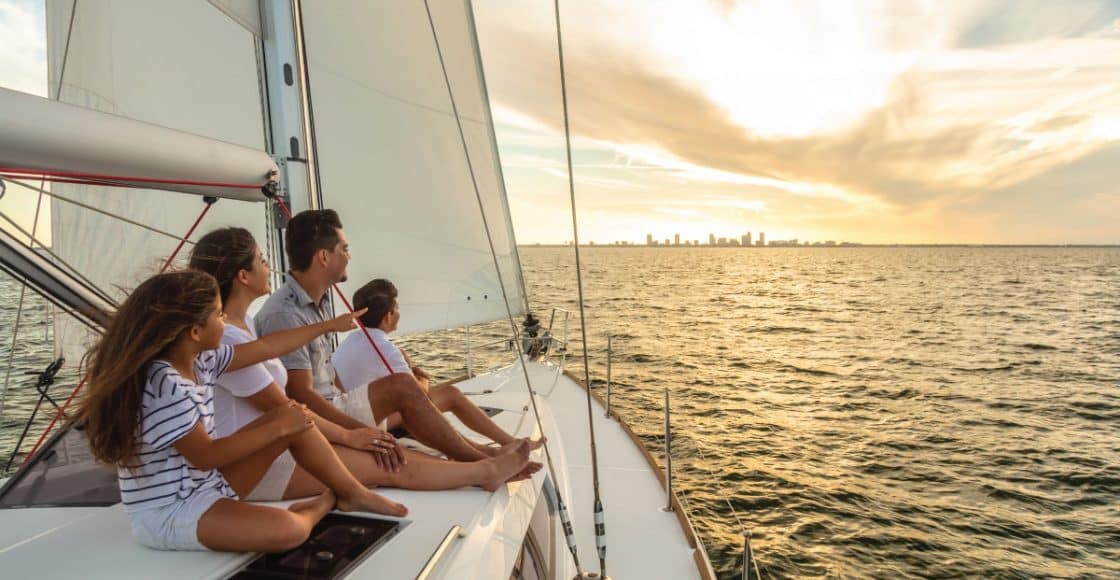 How to Build a Budget to Buy a Sailboat Table of Contents Last Updated on August 28, 2023 by Boatsetter Team Budgeting is key to financial soundness. It should come as no surprise when buying a new or used sailboat that setting a budget for yourself is the way to go! In fact, buying a new or used sailboat can often include expenses beyond the initial price at the sale. Factoring in both one-time and up-front fees and ongoing costs is key to smooth sailing through boat ownership. Post summary:
MaintenanceBoat insurance.
CommissioningUpgrades & repairs, rigging & sails servicing, accessories. Find sailboats for rent near you at Boatsetter Registration or documentationSailboats may be registered via the DMV or documented via the U.S. Coast Guard. The DMV is a recurring fee, while documentation is generally higher but is charged only once. The boat’s size, complexity, and price will have a bearing on which of these is applicable. 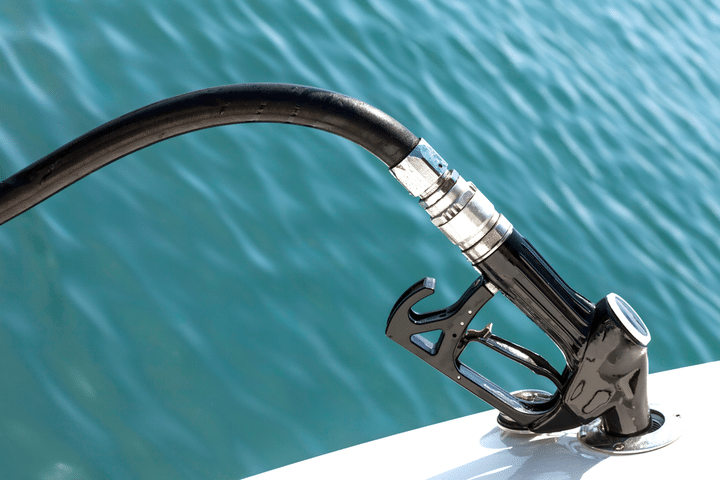 Good news: Sailboats are built to use wind power; therefore, they use very little fuel. However, the bigger the sailboat, the more you’ll need to rely on the engine to move it in light air and to dock it in tight spaces. Sailboat fuel bills are fairly meager since they use small, single engines. Still, depending on use, you’ll need to budget a few hundred dollars per year. You must keep your sailboat in a wet slip or on a trailer. Both options can be pricey, although if you keep the trailer on your property, you’ll save money. Slips are hard to find. In some parts of the country, you can expect to pay well in excess of $30 per foot of overall length per month for a marina slip. You may need to add metered electricity and water to the monthly slip fee. 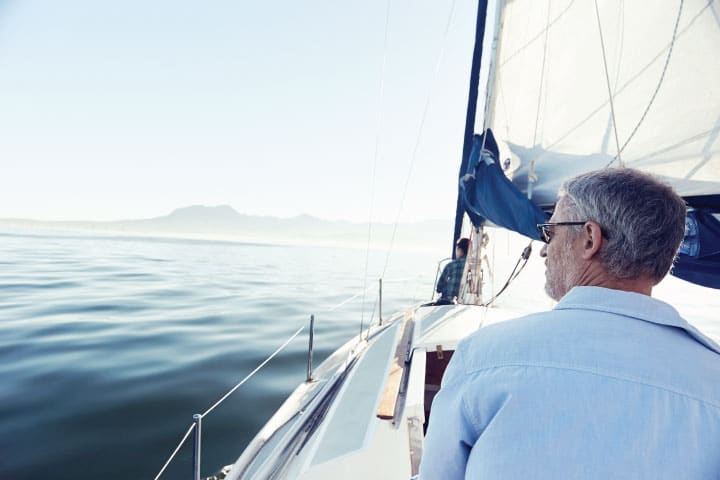 Sailboats aren’t a set-it-and-forget-it proposition. They require near-constant cleaning and care, including washing, varnishing, polishing, waxing, bottom cleaning, painting, etc. You can DIY some of these efforts, but that time comes at the expense of actually boating. Motorized boats– even if they’re sailboats– must carry insurance coverage. The annual charge is usually 1% or more of the purchase price. The insurance cost is influenced by factors such as the boat’s value, size, intended usage, and the boater’s experience. Interest when financing a sailboatIf you finance a sailboat purchase, keep in mind the interest rate! Financing fees may run hundreds of dollars each month depending on the initial price. Financial experts say paying more than the minimum on a loan is the best way to combat climbing interest rates. Commissioning typically (but not always) applies to new sailboats; however, if you truck, tow, or deliver a used sailboat on a ship, it will need to be assembled with its rig and other equipment, called commissioning. A broker or dealer will usually perform and charge for this work, which can cost thousands of dollars. 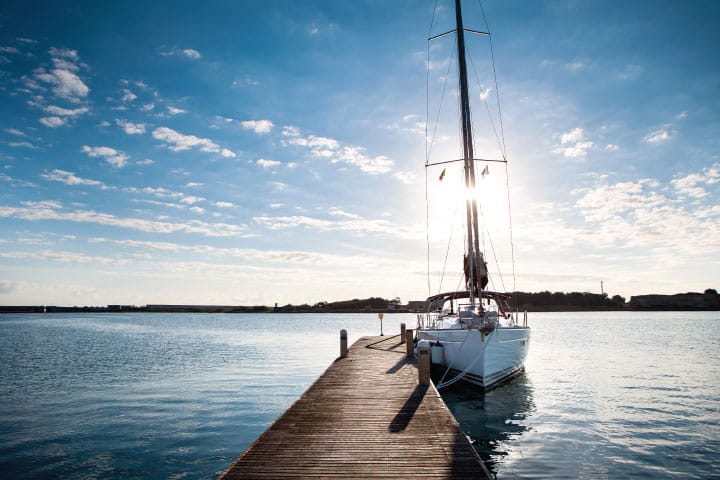 Maintenance includes only the routine tasks to keep a boat in good condition. To repair equipment breaks or upgrade features like electronics, refrigeration, batteries, etc., create a separate budget. And, don’t forget to consider labor costs and installation. Your sailboat’s sails and rigging will need servicing. Masts and booms need to be inspected and painted periodically, the standing rigging will need to be tuned or replaced, sails and control lines need to be cleaned or replaced, winches need servicing, and sail covers wear out with use and the elements. The bigger the boat, the more these items will cost. Be careful not to get too carried away with this fun-spend. You’ll want handheld electronics, apparel for foul weather, extra lines, chart upgrades, safety gear like harnesses, and many toys. You’ll need an extra budget to truly enjoy sailing just like you would with any other passion sport. Check out our list of the 7 Best Sailboat Accessories ! Owning versus renting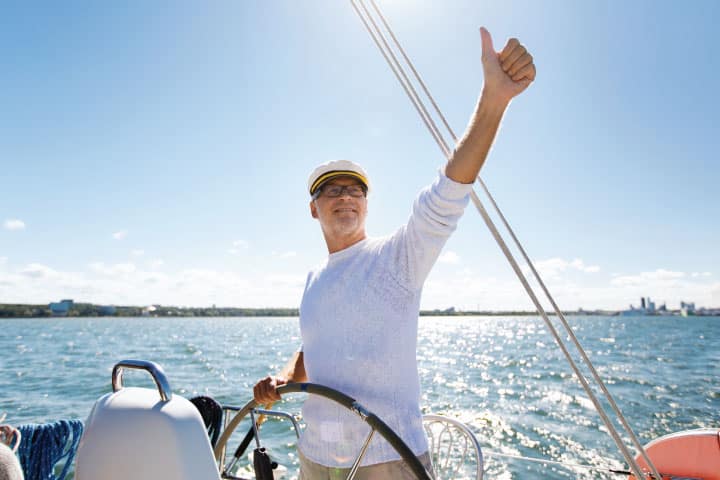 The cost of sailboat ownership can sometimes be 20% or more of the initial purchase price. So, for a $100,000 sailboat, expect to spend another $20,000 annually for its management. Another way to go boating is to charter or rent. You enjoy sailing for a week or day at a time at much-reduced costs. Don’t give up on sailing if buying isn’t right for you right now. Instead, consider renting from a peer-to-peer boat rental service like Boatsetter ! Raise the sails on a bareboat sailboat where you’re the skipper or hire a large yacht with a captain and chef and relax on the foredeck sunbed while sailing on a lovely beam reach. No matter the fee, you’ll spend less overall than taking the plunge into sailboat ownership. More content on sailing:
Boatsetter is a unique boat-sharing platform that gives everyone— whether you own a boat or you’re just renting — the chance to experience life on the water. You can list a boat , book a boat , or make money as a captain . List your boat & start earning an avg. of $20K yearly with Boatsetter  Zuzana Prochazka is an award-winning freelance journalist and photographer with regular contributions to more than a dozen sailing and powerboating magazines and online publications including Southern Boating, SEA, Latitudes & Attitudes and SAIL. She is SAIL magazines Charter Editor and the Executive Director of Boating Writers International. Zuzana serves as judge for SAIL’s Best Boats awards and for Europe’s Best of Boats in Berlin. A USCG 100 Ton Master, Zuzana founded and manages a flotilla charter organization called Zescapes that takes guests adventure sailing at destinations worldwide. Zuzana has lived in Europe, Africa and the United States and has traveled extensively in South America, the islands of the South Pacific and Mexico. Browse by experience Explore articles Destin, FL Boating Guide: Everything You Need to Know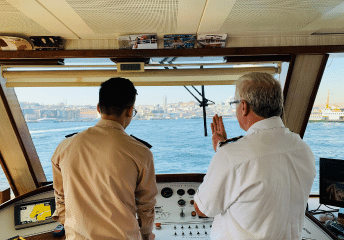 Need to Make Some Extra Cash Become a Boat Captain 10 Best Sailboats for a Fun Lake Day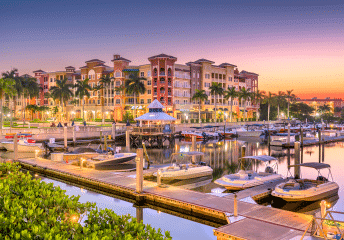 7 Best Waterfront Restaurants in Naples, FL to Get to By BoatHome > Find your Sail > Used Sails Used and In Stock SailsUse the links below to browse through our inventory of used mainsails, headsails, spinnakers, hardware, and sail accessories. If something catches your eye you can use our Used Sail Quote Form below to get in touch or call us at 1-888-958-5638 . Make sure to tell us the luff, leech, and foot measurements of the sail you are looking for. All prices are in USD and all sales are final. Refunds or returns are only available if the dimensions or descriptions of the sail are inaccurate. Don’t see a used sail that will fit quite right? Get a quote for a new sail . It’s quick and easy and our prices may surprise you. 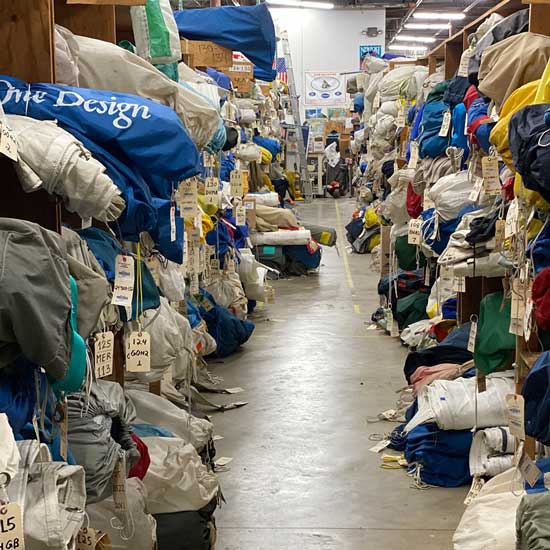 Don’t let a torn sail or expensive repairs keep you from sailing.Fall is coming and now is the time to get an updated quote for up to 30% off! New sails have never been easier to replace your existing sail with!
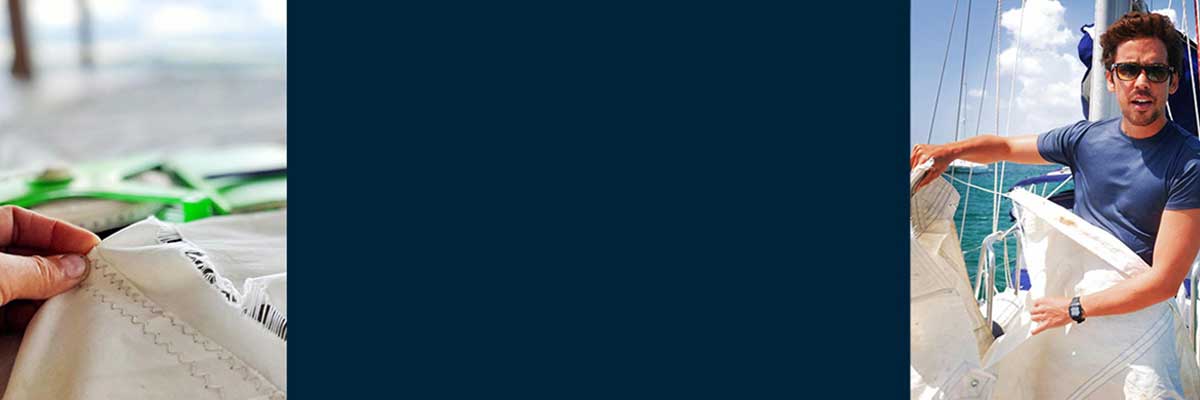 Browse Our Used Sails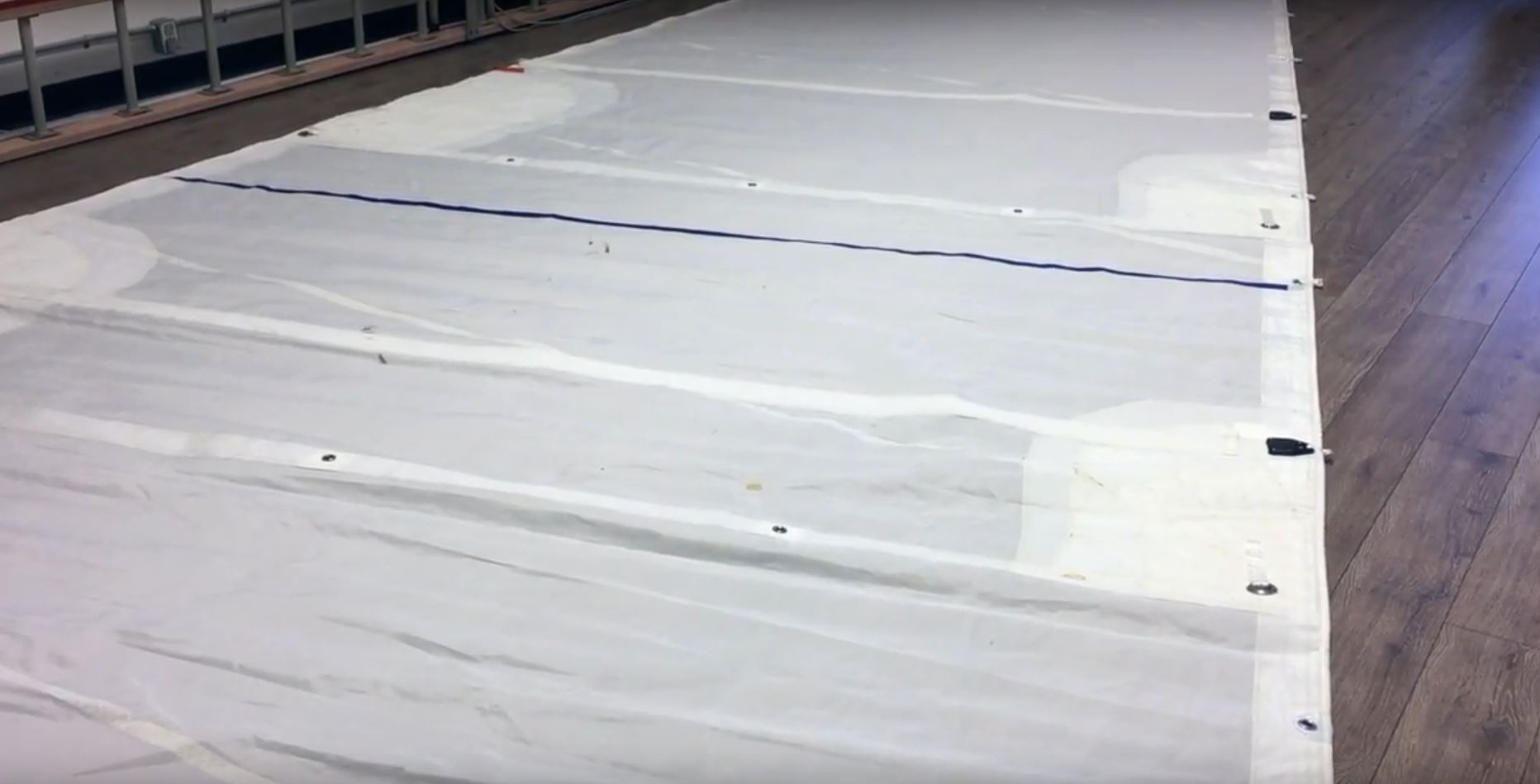 Used MainsailsBrowse through our in stock selection of used mainsails at affordable prices. Many of our used mainsails are still in great condition! 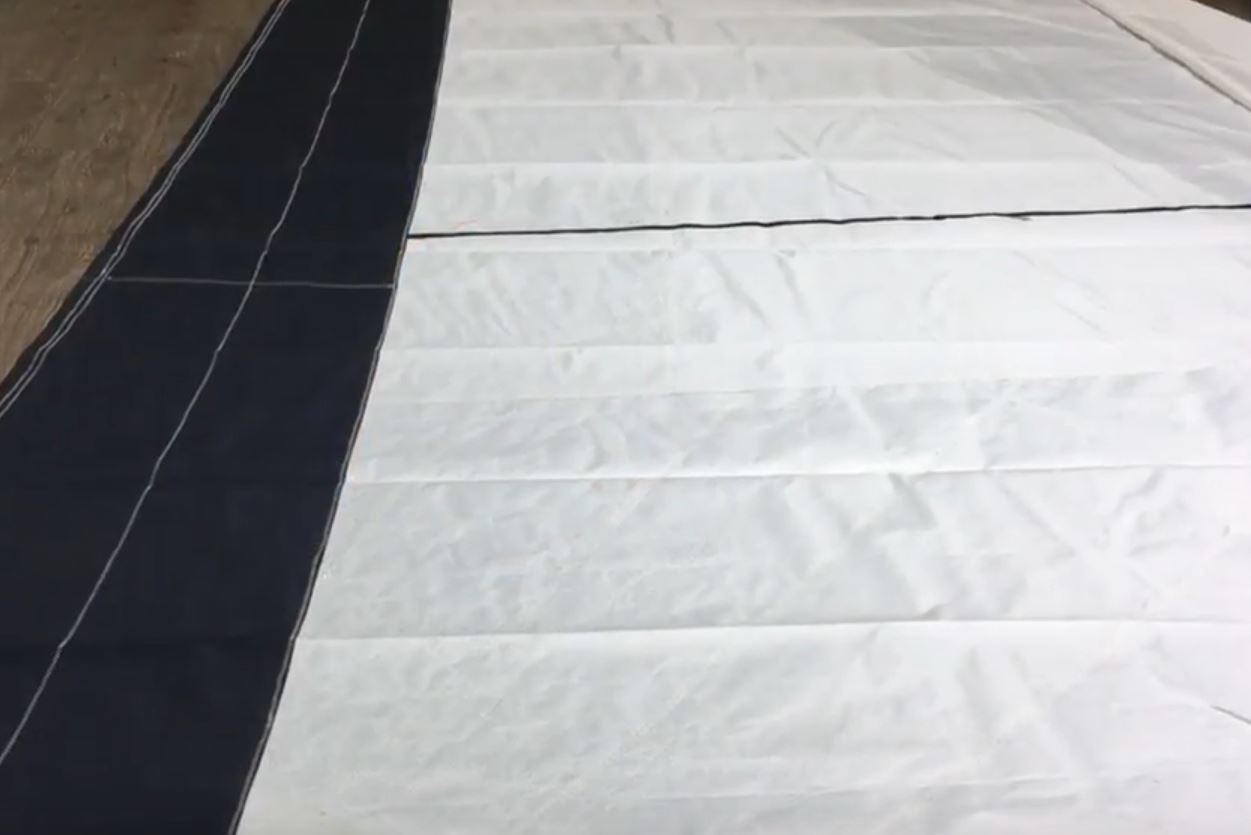 Used HeadsailsBrowse through our in stock selection of used headsails at affordable prices. Many of our used headsails are still in great condition! 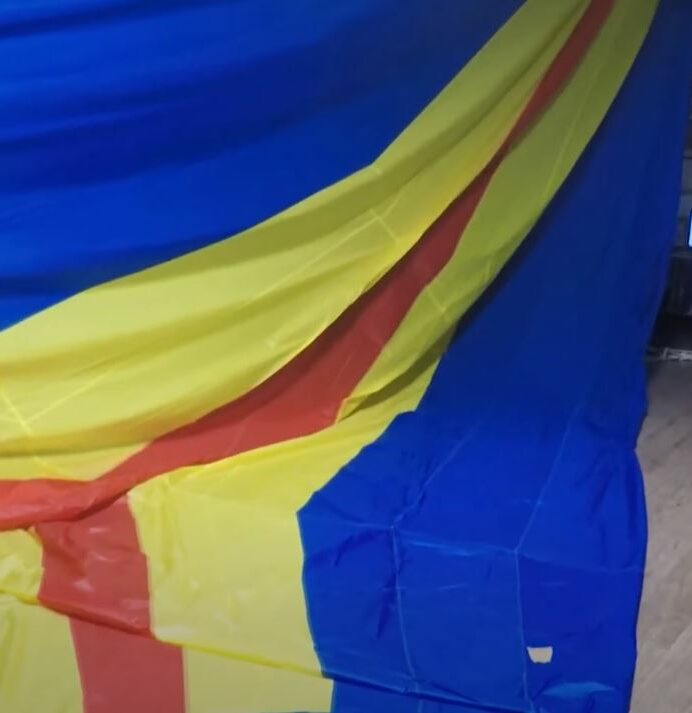 Used SpinnakersBrowse through our in stock selection of used spinnakers at affordable prices. Many of our used spinnakers are still in great condition! 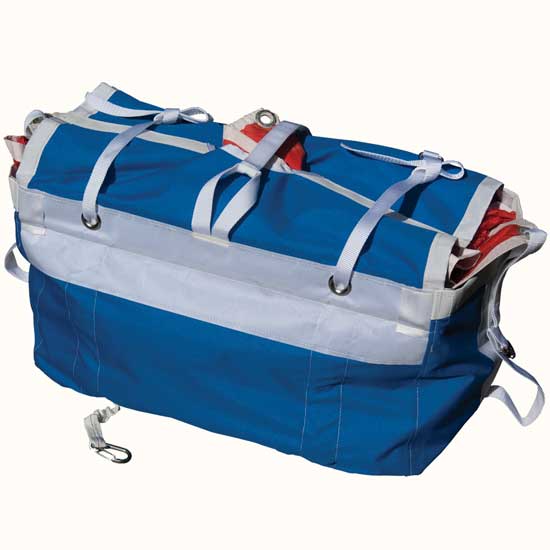 Used Hardware & AccessoriesLook for used sail accessories through our in stock selection of used hardware & accessories. You can also check out our store for more great deals on sailing gear! Request Information on Used vs New SailsOnce you’ve found the used sail that you want to buy, or you’re curious about the differences between buying used vs new, click here and our team will get in touch with you about the next steps for your used sails purchase! " * " indicates required fields Thanks for telling us a bit about yourself and your boat. Our team will send you a preliminary quote based on information we have gathered from sailors similar to you. We will give you a call in order to narrow down the options on your quote and improve the accuracy. If you want us to call you at a specific time, feel free to schedule a time on our calendar! Thanks for telling us a bit about yourself and your boat. Our team will reach out to offer some suggestions and get started on finding you the perfect sail!  How to see NASA's massive orbiting solar sail from HoustonH oustonians can catch a glimpse of NASA's new solar sail zooming across the night sky as it orbits Earth . Launched on April 23, 2024, the space agency's Advanced Composite Solar Sail System (ACS3) is designed to test solar sail technology, a cost-effective form of space travel that harnesses sunlight , just as sailboats harness the wind, for propulsion. The small spacecraft unfurled its 860-square-foot reflective solar sail in a low-Earth orbit on Aug. 28. On Aug. 29, the ASC3 spacecraft deployed its 860-square-foot solar sail from an altitude about 600 miles above Earth—roughly twice as high as the International Space Station . While in orbit, the sail can be seen from the ground under the right conditions as its material can reflect enough sunlight to be as bright as Sirius, the brightest star in the night sky. NASA's app allows skygazers to track sightings of the solar sail from their location, providing the direction of the sky it will be visible, its celestial altitude, and the duration of each sighting. The app also features a built-in augmented reality tool that points users to the location of the spacecraft in real-time. A max height of at least 40 degrees above the horizon provides the best chance for a sighting opportunity. Per the NASA app, the sail will be visible from Houston throughout the month of September. On Tuesday, the solar sail will be visible for six minutes starting at 10:15 p.m., reaching a max height of 57 degrees. The sail can be found 32 degrees above the horizon toward the east. It will disappear at 13 degrees toward the north-northeast. The next ideal sighting opportunities from Houston this week will be on Thursday at 9:36 p.m. when it reaches a maximum height of 65 degrees above the horizon toward the east-northeast for six minutes, and on Friday at 10:11 p.m. when it reaches a maximum height of 58 degrees above the horizon toward west-northwest direction. The sail has already been spotted from various locations around the globe since it was deployed. On Sept. 5, a Canadian satellite tracked Kevin Fetter and photographed the sail passing directly in front of Vega, one of the brightest stars in the night sky. "It got bright for a short time as it was passing by the star," Fetter told SpaceWeather.com . "Briefly it was just as bright as Vega, the 5th brightest star in the night sky. ASC3 isn't the first solar sail to be launched into orbit. In 2010, the Japanese spacecraft IKAROS became the first successful solar sail deployment, which was followed by a handful of subsequent solar sail attempts.  Sail to the solar eclipse: Virgin, Aurora Expeditions to offer specialty cruises in 2026
If seeing the total solar eclipse in 2026 is on your bucket list, cruise lines have you covered. Multiple operators have announced voyages that will take guests to the path of totality in recent weeks – along with plenty of other destinations. Aurora Expeditions guests can see the phenomenon as part of the company’s Jewels of the Arctic: Greenland Solar Eclipse Itinerary. “Embark on an extraordinary adventure to Scoresbysund, Greenland, sailing through stunning Arctic landscapes as we position ourselves for the celestial spectacle,” the company said last week in a news release. “Feel the anticipation grow as the moon gradually eclipses the sun, casting an ethereal glow.” Adults-only cruise line Virgin Voyages will also offer eclipse cruises of its own as part of its Marvelous Voyages collection. When are the 2026 solar eclipse cruises?Aurora’s solar eclipse itinerary from Oslo, Norway, to Reykjavik, Iceland, will begin on Aug. 2, 2026. The 15-day journey on the company’s Greg Mortimer ship will also explore Svalbard – where guests should keep their eyes peeled for other wild sightings like polar bears – the Denmark Strait and more. The first of Virgin’s two cruises, Eclipse in the Land of Fire and Ice , will set sail on Aug. 5, 2026, from Portsmouth, England, aboard its Valiant Lady ship. In addition to eclipse viewing, the round-trip, 15-night sailing will stop in Dublin, Ireland; Reykjavik; and Edinburgh, Scotland, among others. Total Eclipse of the (Med) , a 12-night cruise on Scarlet Lady, will sail from Barcelona, Spain, to Civitavecchia, Italy, starting Aug. 10 with ports including Cannes, France, Ajaccio on the island of Corsica, and Salerno on the Amalfi Coast. The news comes after Holland America Line announced three eclipse cruises in July, including one round-trip from the U.S. Why should I take a solar eclipse cruise?Cruise ships not only offer expansive views of the horizon but can maneuver away from potential obstructions. “Having the ability to map out based on what the current weather is where you can catch the eclipse, and having a range over the course of the ocean where you could chase that a little bit is certainly helpful,” Adam Burgasser, a professor of astronomy and astrophysics at the University of California, San Diego, previously told USA TODAY . He served as an expert on board an April Holland America eclipse cruise. 'The ship can move': Why you should watch next solar eclipses from a cruise ship How much do the cruises cost?Aurora’s sailing currently starts at about $21,245 per person based on double occupancy. The fare includes a pre-cruise hotel stay, a chartered flight from Oslo to Longyearbyen, meals during the cruise and drinks like beer and wine with dinner, shore excursions and more. Virgin’s Eclipse in the Eclipse in the Land of Fire and Ice cruise currently starts at $5,201 per person based on double occupancy, while Total Eclipse of the (Med) starts at $3,970 per person. The fares include a wide range of dining venues on board, Wi-Fi, gratuities, fitness classes and more. Nathan Diller is a consumer travel reporter for USA TODAY based in Nashville. You can reach him at [email protected]. The Key Points at the top of this article were created with the assistance of Artificial Intelligence (AI) and reviewed by a journalist before publication. No other parts of the article were generated using AI. Learn more .  | ||||||||||
IMAGES
VIDEO
COMMENTS
The prices of buying new sails vary greatly depending on several factors such as your boat's length, sail material, quality of the fabric, and many others. For instance, a 24-feet Bermuda sloop can cost between $1,000 and $2,500 while sails on mid-sized boats can cost between $3,000 and $5,000. The price of a new sail will, of course, depend on ...
Replacing the jib and main sail on a 24' Bermuda sloop will typically cost between $1,000-$2,500. Sails on mid-sized boats (34') will generally cost between $3,000-$5,000. Prices can greatly vary depending on boat length, sail material, quality of fabric, and so on. Cost increases relative to sail area and hull length.
This is a rough estimate based on quotes from a variety of different sailmakers, but prices can vary massively depending on the variables listed above. Cost of sails for a 42′ to 50′ sailboat = $2,700-$6000. Cost of sails for a 36′ to 42′ sailboat = $2,000-$5,000. Cost of sails for a 30′ to 35′ sailboat = $1,500-$3,000.
Sails are the driving force behind sailboats, harnessing wind power to propel a vessel across the water. For both novice and seasoned sailors, understanding ... Price: A Dacron mainsail for a 30-foot boat typically costs $2,500 - $3,500. Performance materials can cost upwards of $5,000. 2. Jib.
Sails for mid-sized boats (34′) usually range from $3,000 to $5,000. Also, the cost varies greatly depending on the LOA, the sailcloth and material, as well as the type of the boat. Keep in mind that the cost also rises as the sail area and hull length grow.
If the boat sails mostly in Buzzard's Bay or San Francisco Bay, a smaller sail would be appropriate (125-135% percent of LP)." ... leech cord with cleat, telltales, and sail bag. Base Sail Cost: $1,786. Options: UV acrylic cover; $377. Foam luff; $197. Price: $2,360. Option 2—RF genoa (450.64 sq. ft.). Tri-radial construction using ...
We make it easy to get new sails custom designed for your sailboat or sailing yacht, at the best prices online. Replacement sails for Catalina, Hunter, Beneteau, Pearson, C&C, and 15,000 more! Get a free quote within 24 hours or less. Headsails, Mainsails, Spinnakers, and Turtle Bags too!
North Sails is the trusted choice for racing and cruising sailors. With over 60 years of experience, North Sails has pioneered the way we view sails today. This trusted brand creates quality sails for racing and cruising boats and is always innovating new sail technology to bring you the best in craftsmanship.
Regardless, genoa sails have large surface areas, so they can majorly increase the speed of watercraft, particularly in light to moderate winds. Given their importance, it's no surprise that new genoas can vary heavily in cost. For example, a new genoa sail for a boat measuring 42 feet to 50 feet may cost between $5000 and $9000.
Trust the expert sailors and craftsmen at NationalSail.com to provide the finest mainsails available online. We offer sailboat sails for sale designed for the most popular crafts on the water, including Hunter yachts, Catalina yachts, MacGregors and all offshore cruising yachts. Each mainsail we offer is designed to help you fly across the ...
New Sail Price Calculators. These cost calculators give average prices for basic sails and may not reflect current pricing. For a firm quote on a customized sail with exactly the features you want, call the loft at 508-563-3080.
Used sails can be an excellent way to quickly get sails on your boat at a reasonable cost. Browse through our list of used mainsails, headsails, and spinnakers. When beginning your search for a used sail make sure to measure your boat. Used mainsails require the maximum luff length and foot length as well as slider type and size.
The Best Value in Custom Sails. Quality Inshore, Offshore and Club Racing mainsails, headsails and spinnakers using premium sailcloth and with 3- and 5-year warranties. Instant online sail prices for thousands of boats and you can add the specific options you need—reefs, battens, sail numbers & more. Expert assistance—we'll help you find ...
We'll use Atlantic Sail Trader's used sail ranking system as an example: Fair - 45-50% of life left. Good - 70-80% of life left. Very Good - over 90% of life left. If my sails cost $5,000 new (with 100% life left), you'd think that a "good" set with 75% life left should cost should cost $3,750.
A 22-foot sailboat may be close to $30,000 brand new, yet an older model of the same boat built in the late 1970s might be purchased for $5,500 or less. A shiny new 48-foot catamaran will cost you well over $1,000,000, while a similar boat built in 2008 may be purchased for $425,000, and be better equipped.
The price of owning a sailboat may vary depending on several factors such as the size of the sailboat, its model, whether it's new or used, and how often you use the sailboat. For example, a new Islander 36' can cost nearly $150,000 while a used one can cost you around $40,000. Again, the price of a new 26' Catalina can cost you around $80,000 ...
The average cost of a new cruising sailboat is about $250,000. This number is taken from analyzing new sailboat listings of various sizes, with the average being about 35 feet in overall length. New cruising sailboats range in price from around $150,000 to well north of $500,000 for large and custom models. Aluminum sailboats cost significantly ...
The cost of sailboat ownership can sometimes be 20% or more of the initial purchase price. So, for a $100,000 sailboat, expect to spend another $20,000 annually for its management. Another way to go boating is to charter or rent. You enjoy sailing for a week or day at a time at much-reduced costs.
Used and In Stock Sails. Use the links below to browse through our inventory of used mainsails, headsails, spinnakers, hardware, and sail accessories. If something catches your eye you can use our Used Sail Quote Form below to get in touch or call us at 1-888-958-5638. Make sure to tell us the luff, leech, and foot measurements of the sail you ...
Jeanneau Sun Odyssey 42DS sailboat price. Price: $120,000-$180,000, used. Type: monohull, coastal liveaboard. The Sun Odyssey 42DS is a popular model designed with a cruiser's comfort in mind. If you're looking for a modern boat for coastal sailing that is also affordable, this one fits the bill.
On Tuesday, the solar sail will be visible for six minutes starting at 10:15 p.m., reaching a max height of 57 degrees. The sail can be found 32 degrees above the horizon toward the east.
2317 Tall Sail Dr #E, Charleston, SC 29414 is a 2 bed, 2 bath house now for sale at $365,000. MLS# 24023254. ... Monthly cost estimate Asking price. $365,000 Expense Monthly cost; Mortgage Principal & interest Assumes 20% down, 30 yr. fixed, good credit
How much do the cruises cost? Aurora's sailing currently starts at about $21,245 per person based on double occupancy. The fare includes a pre-cruise hotel stay, a chartered flight from Oslo to ...